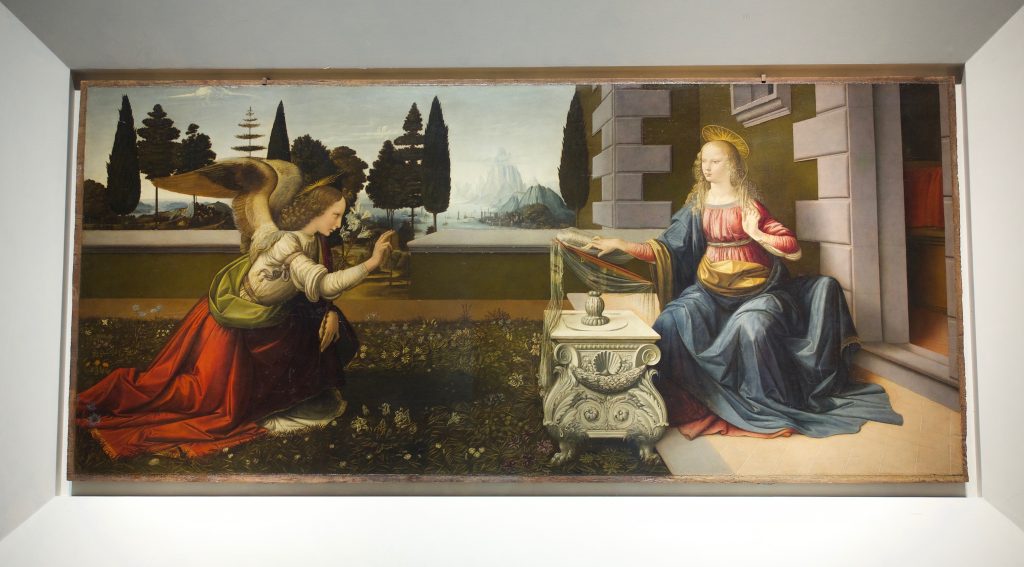
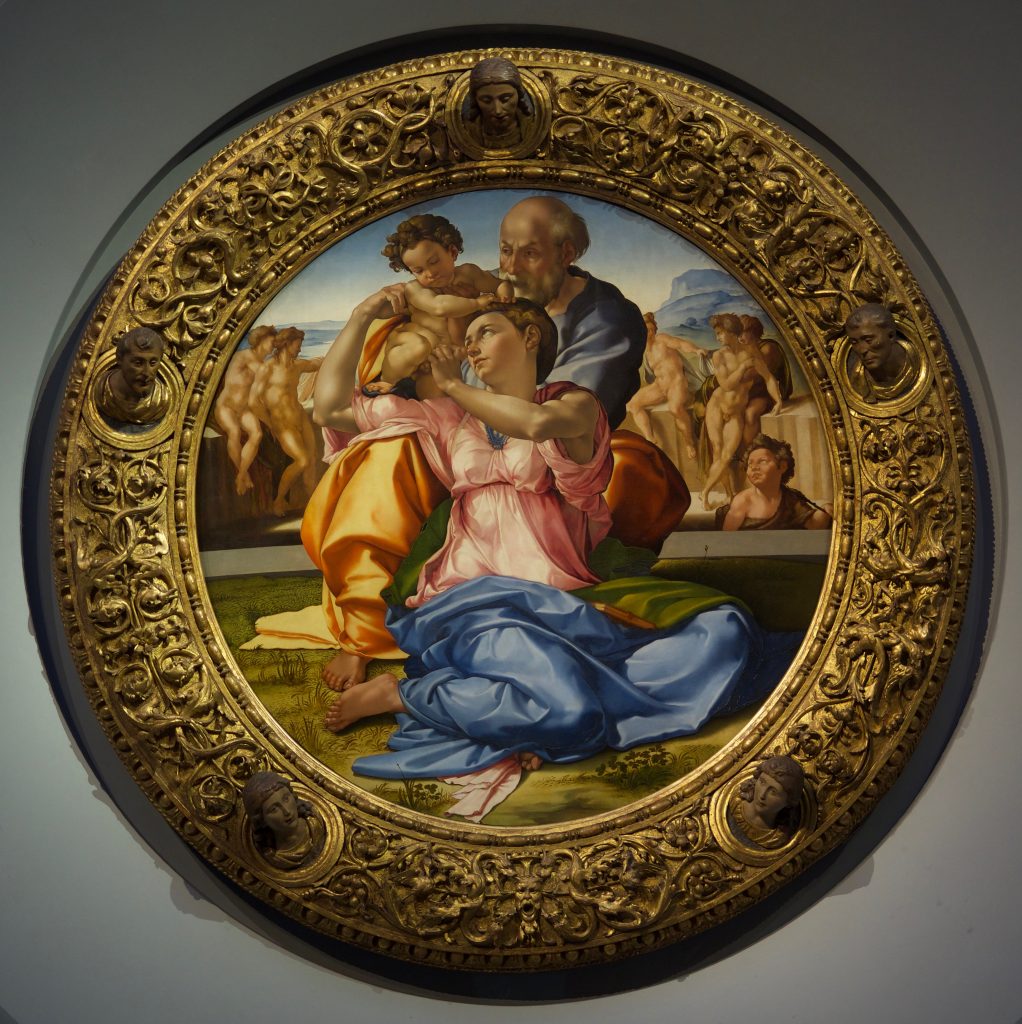
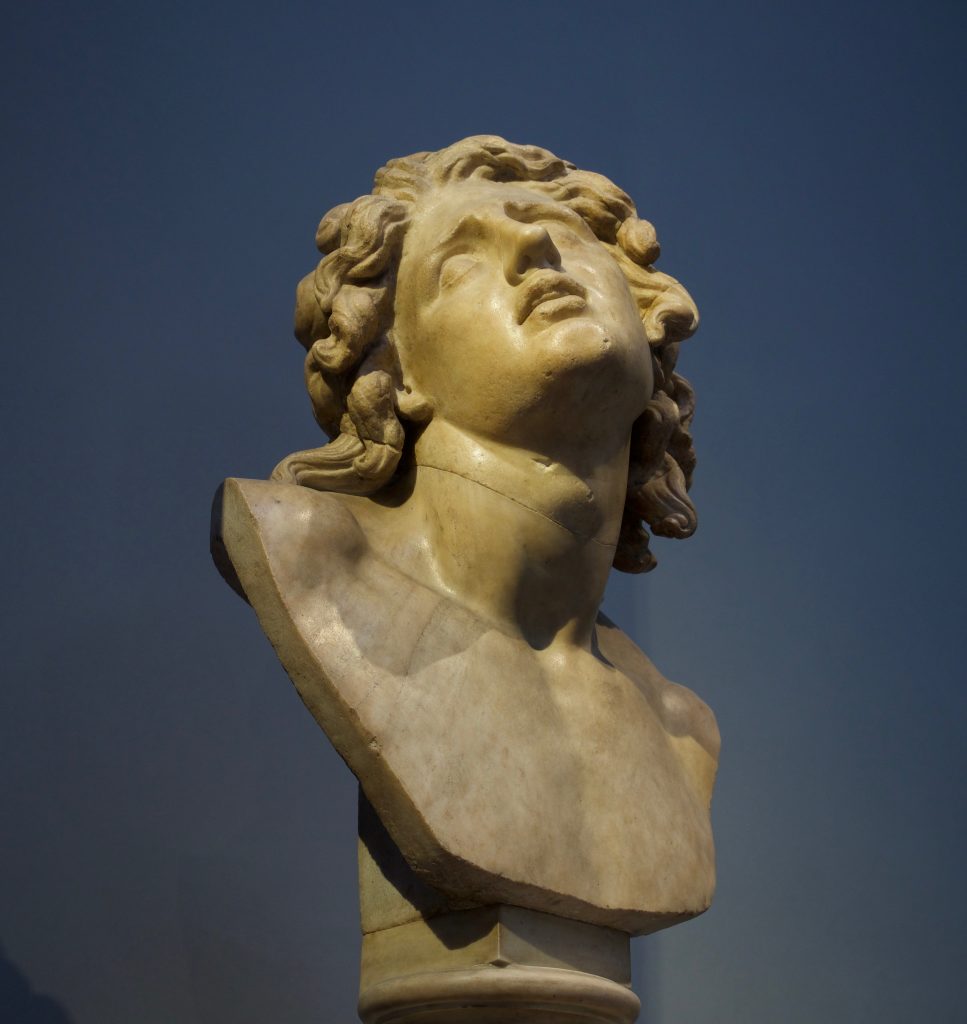
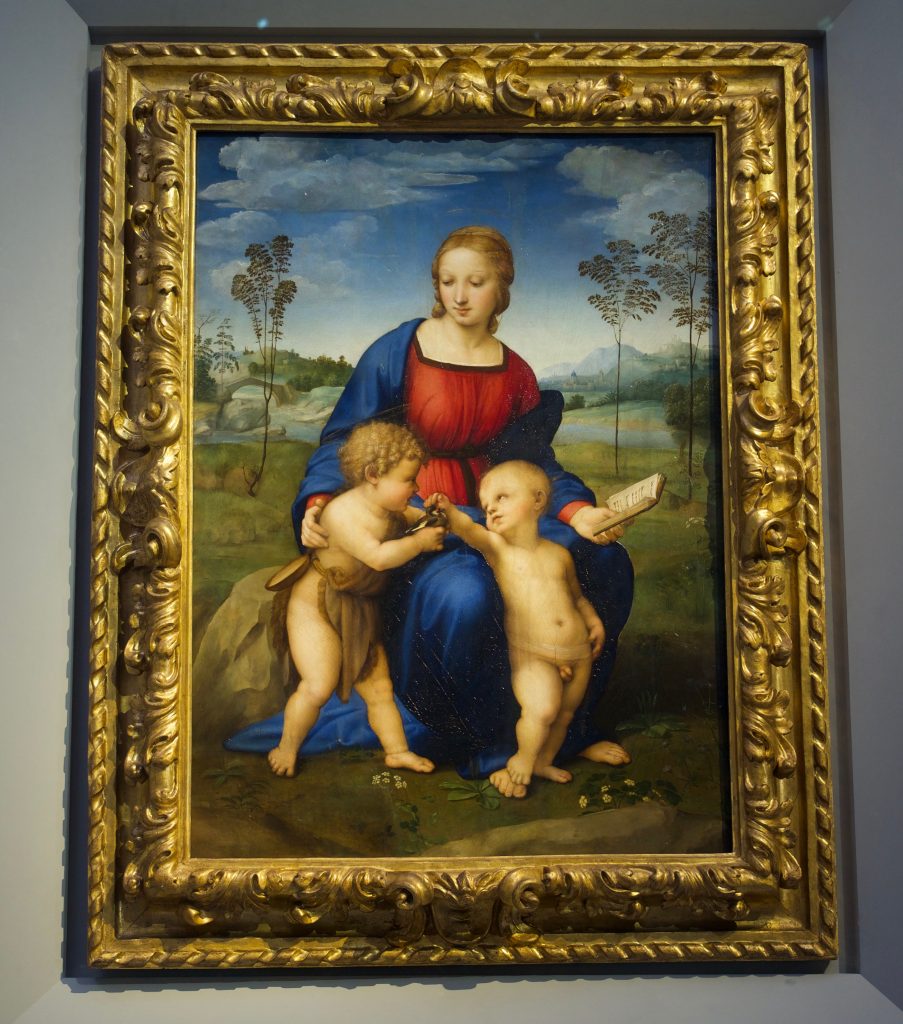
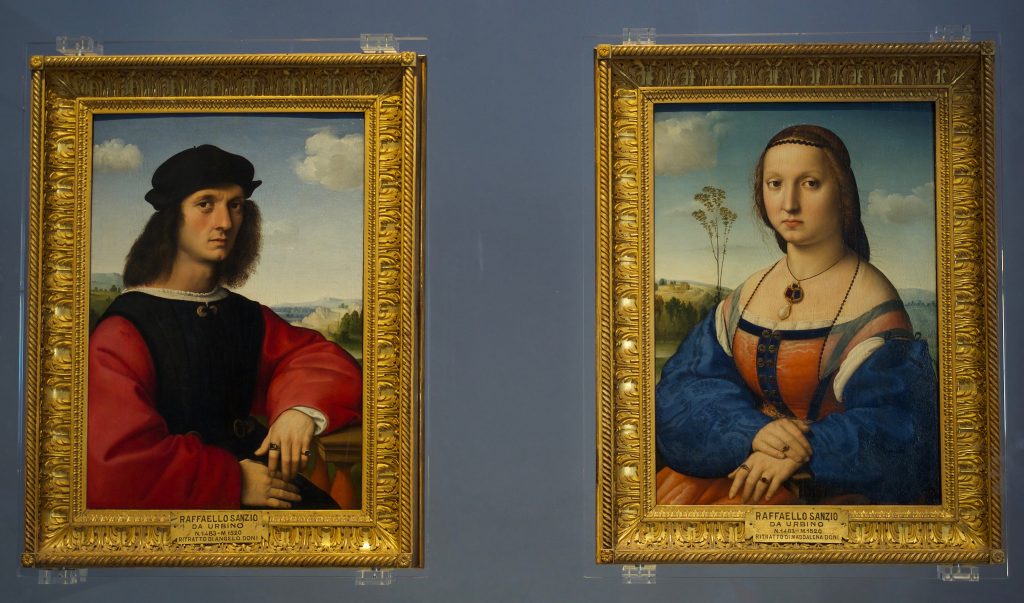
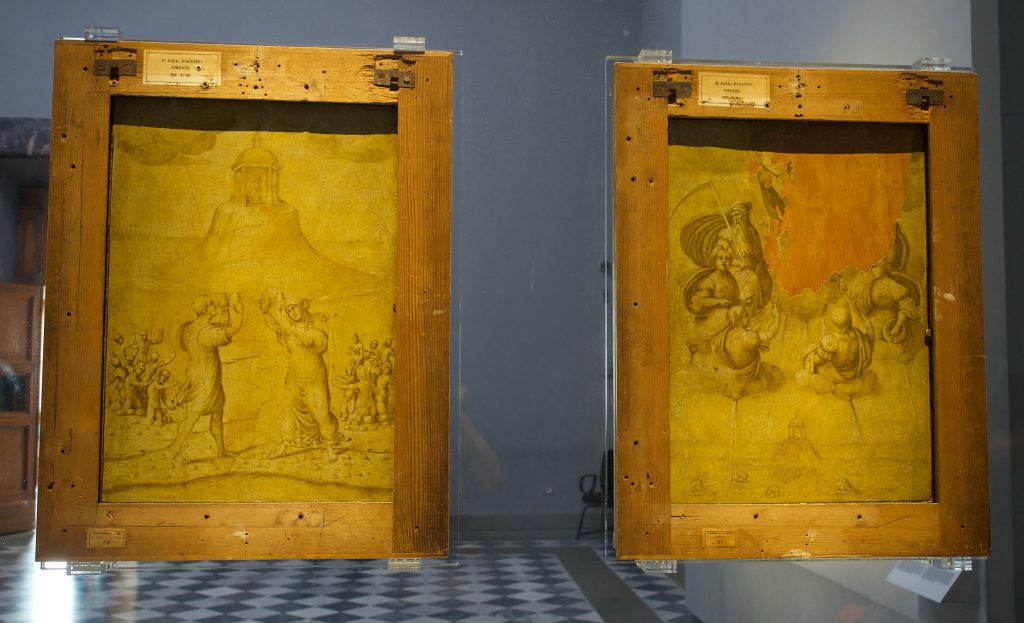
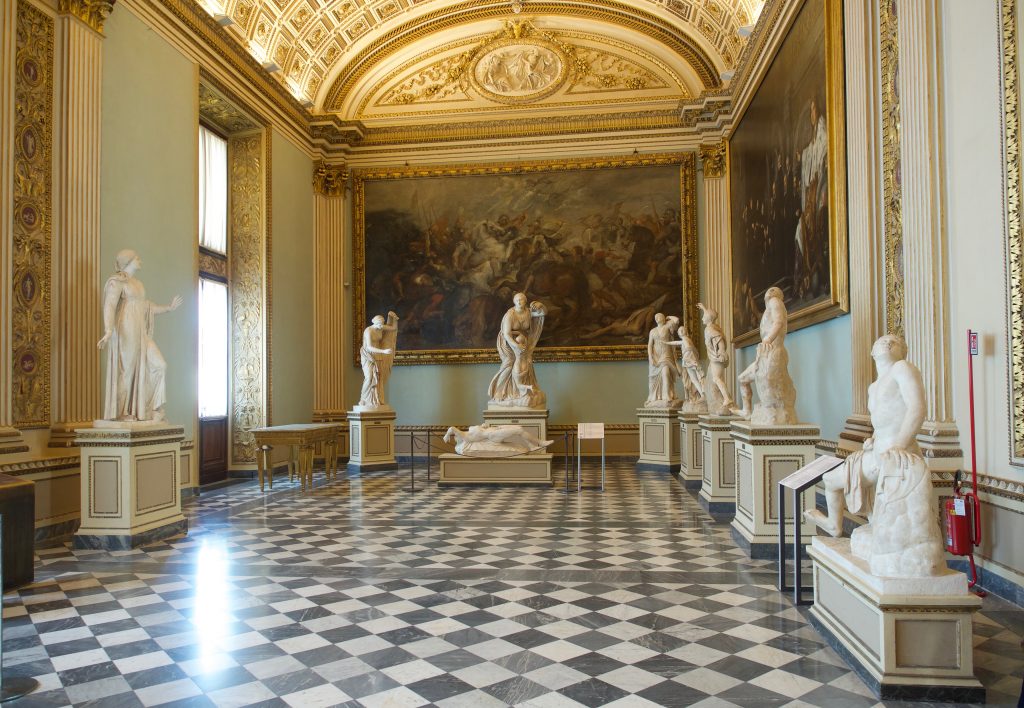
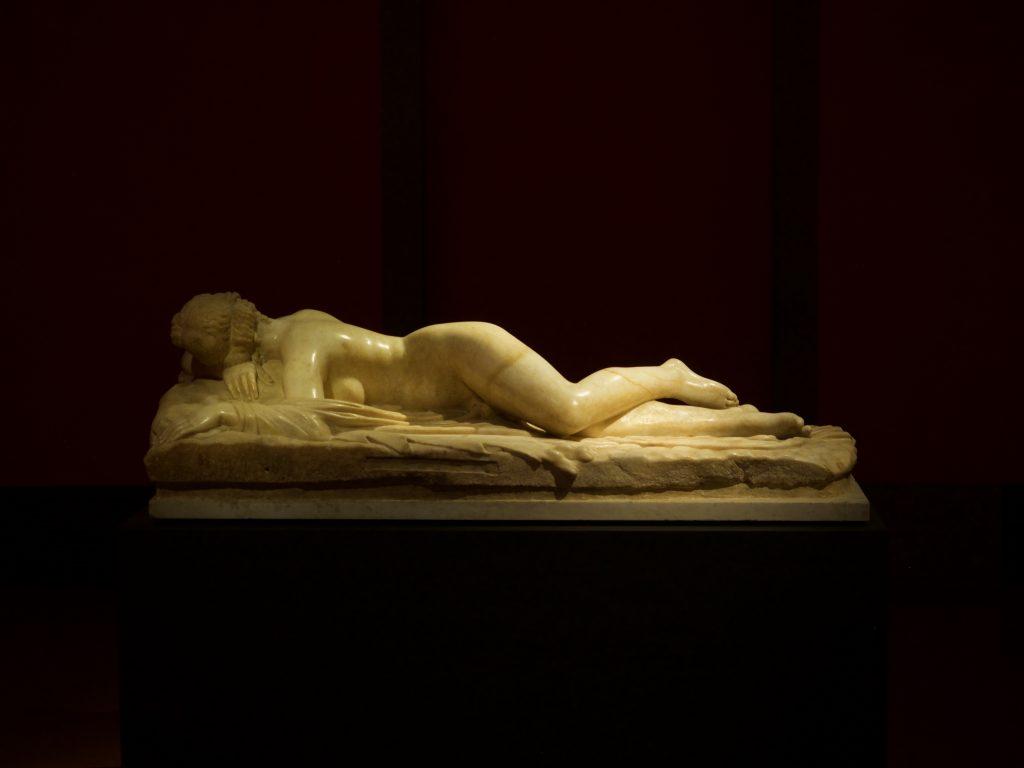
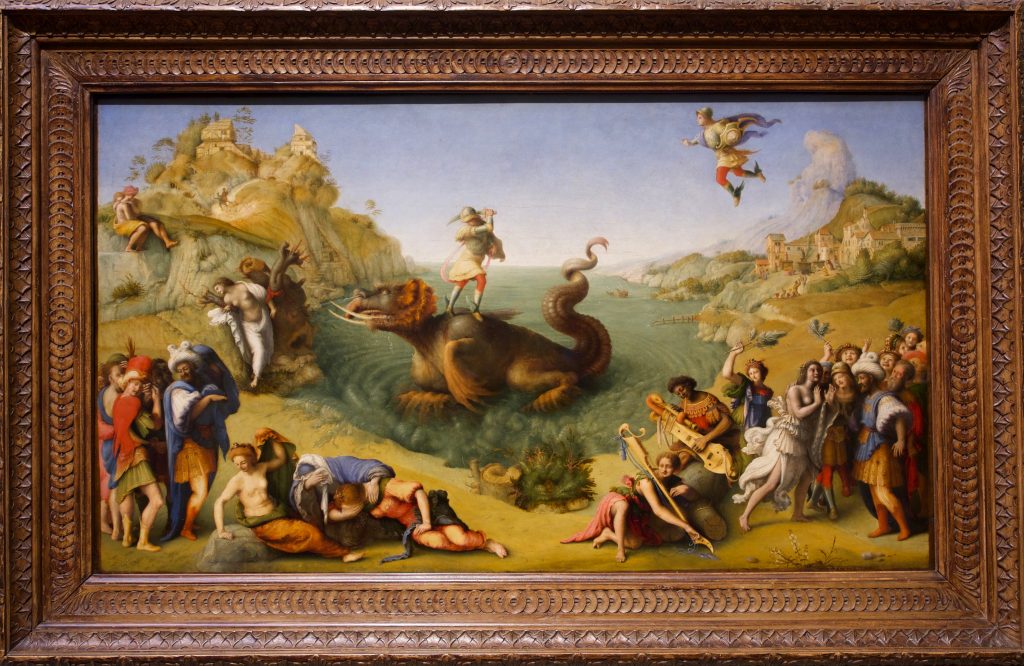
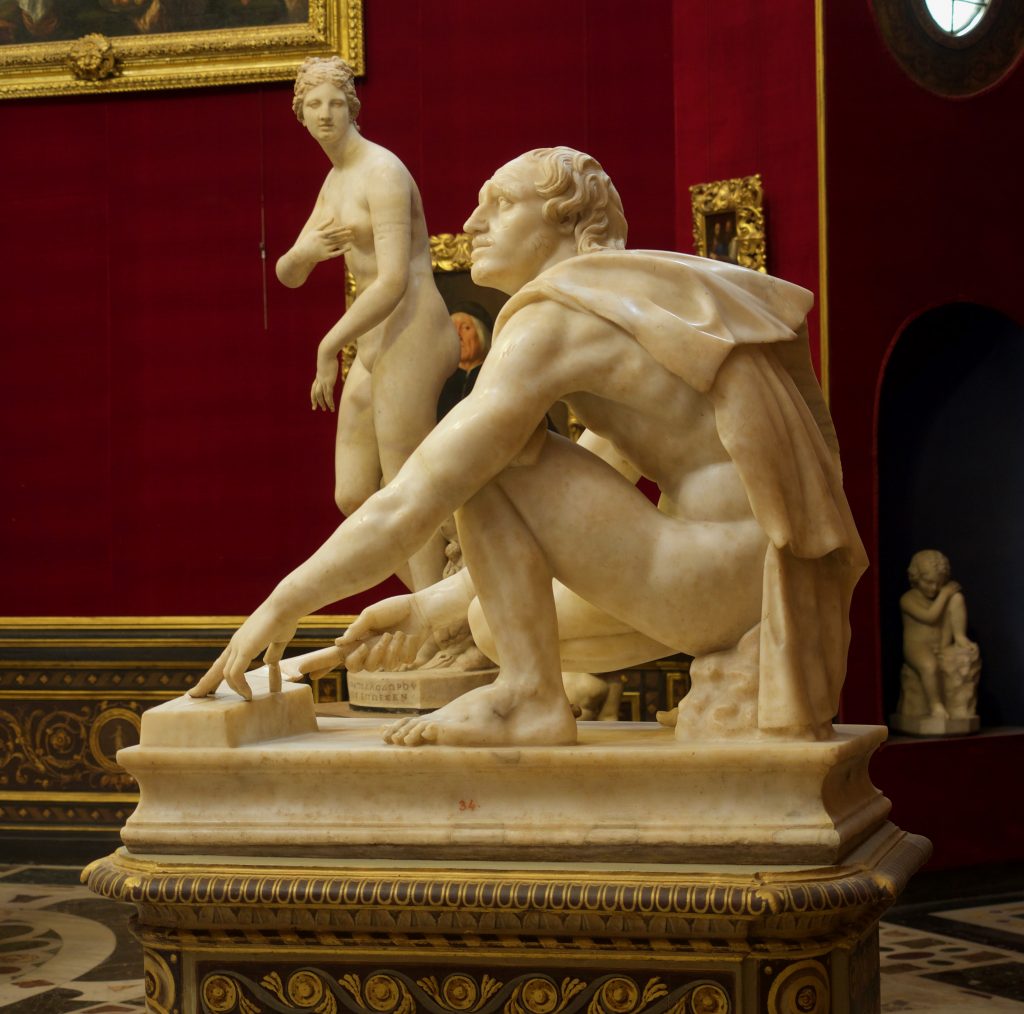
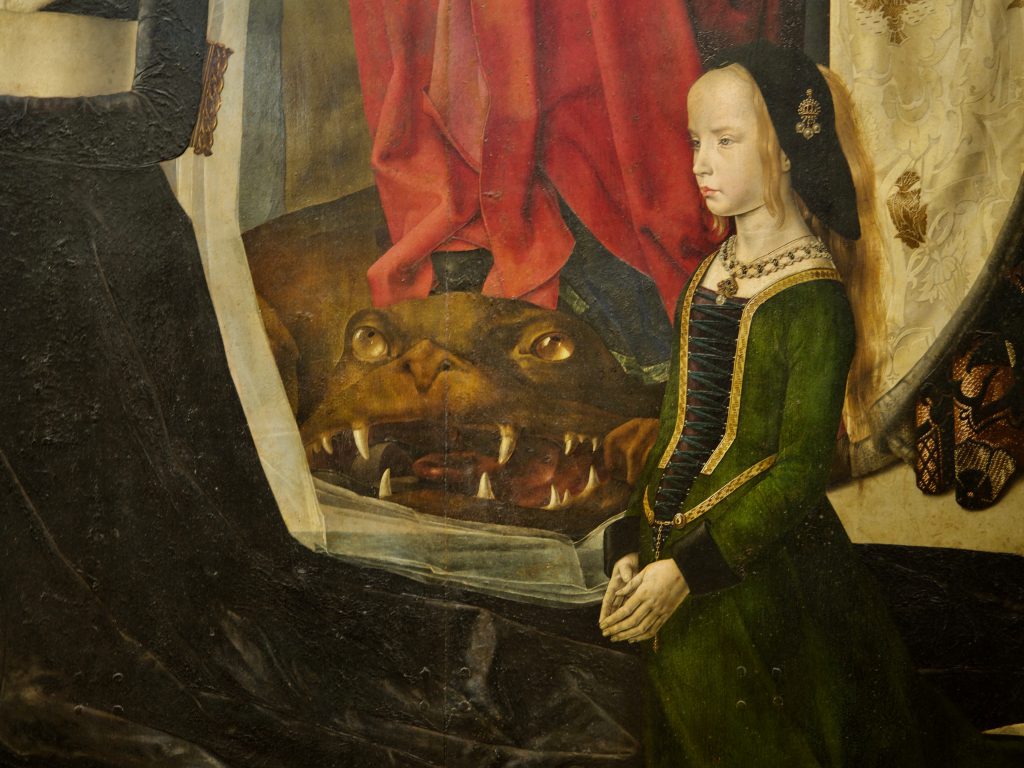
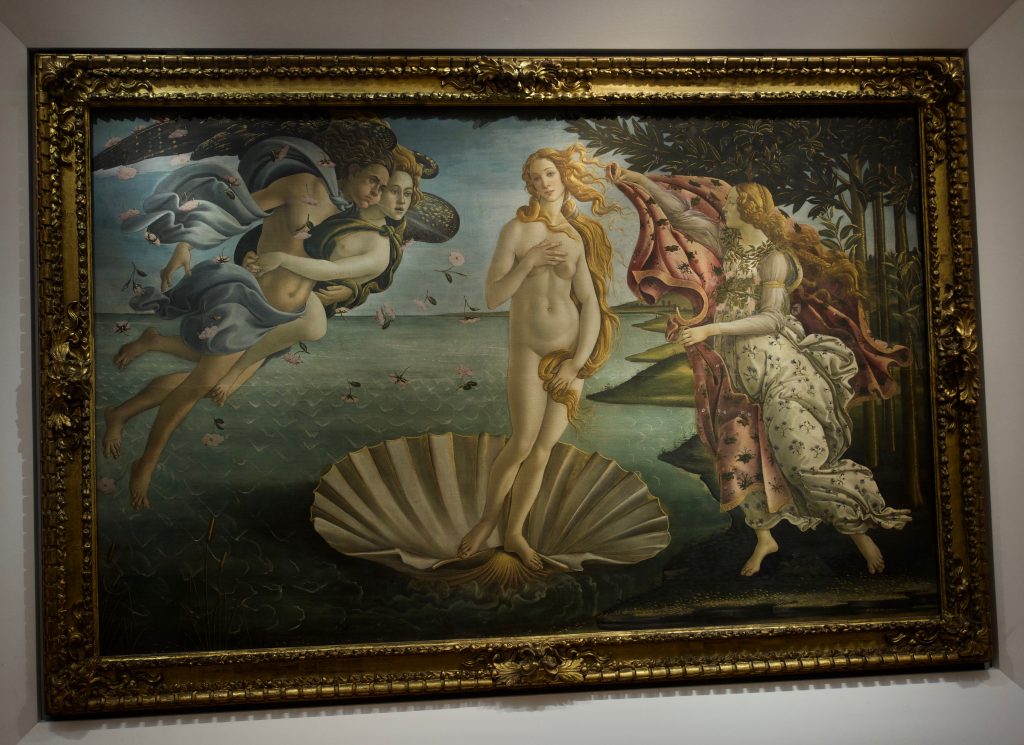
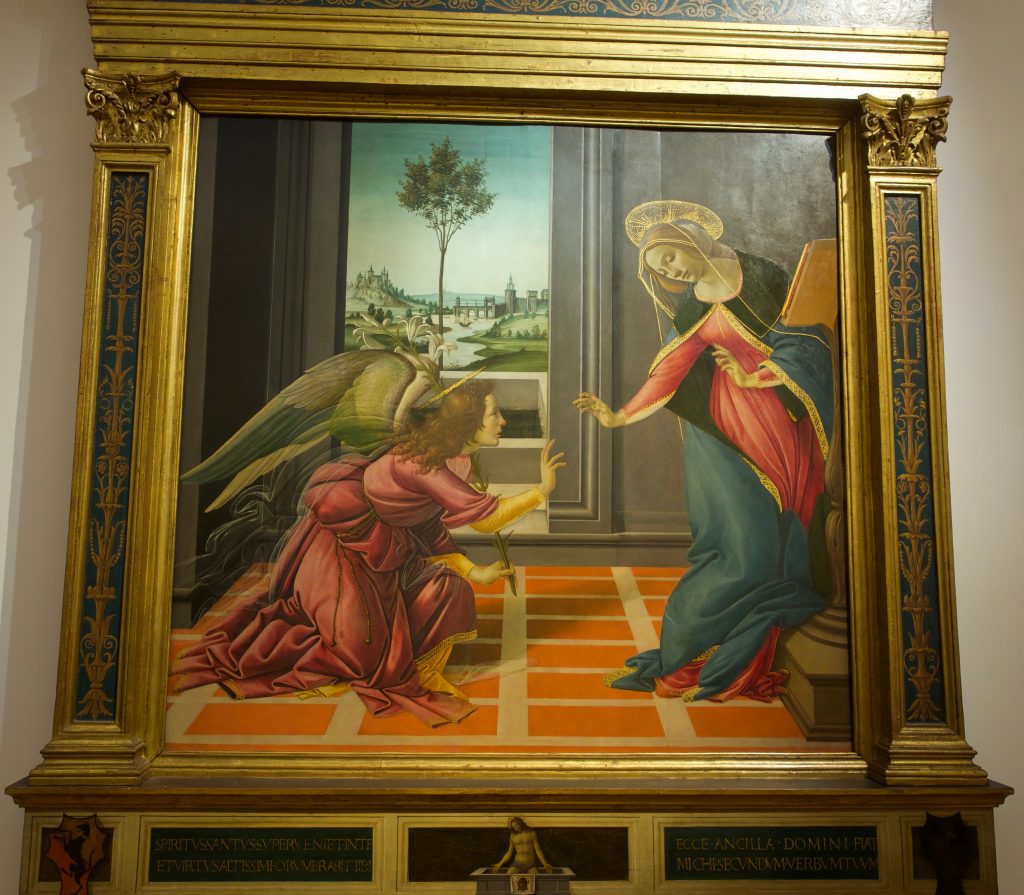
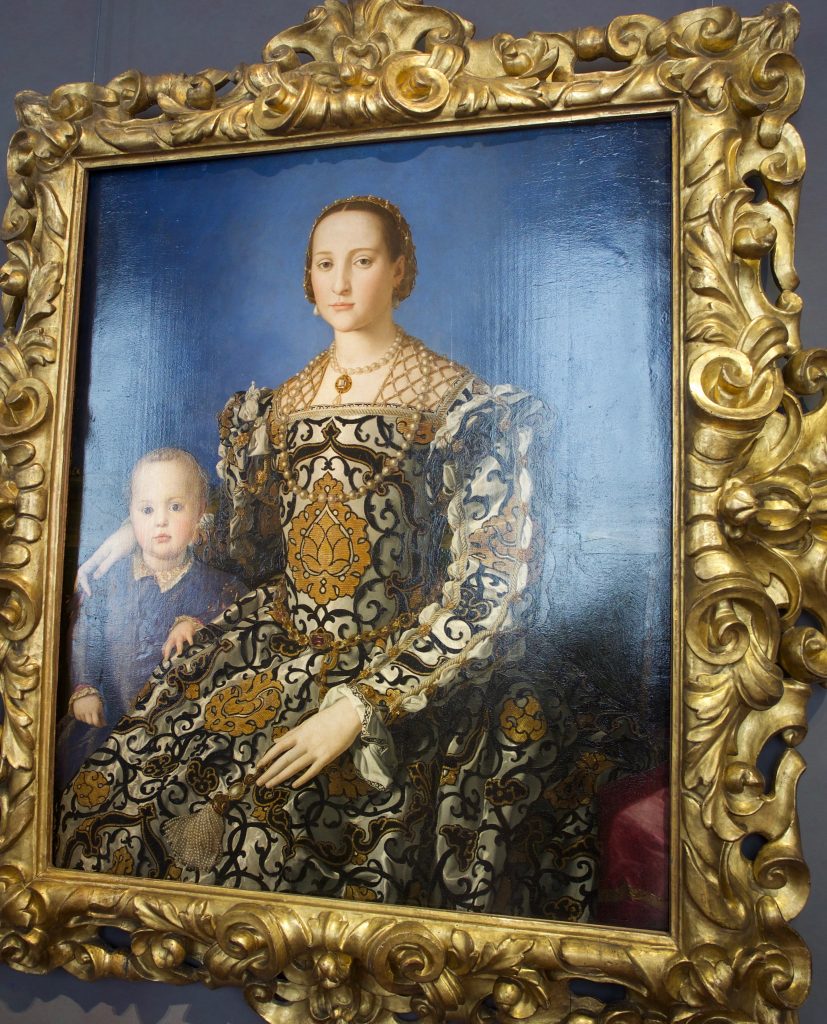
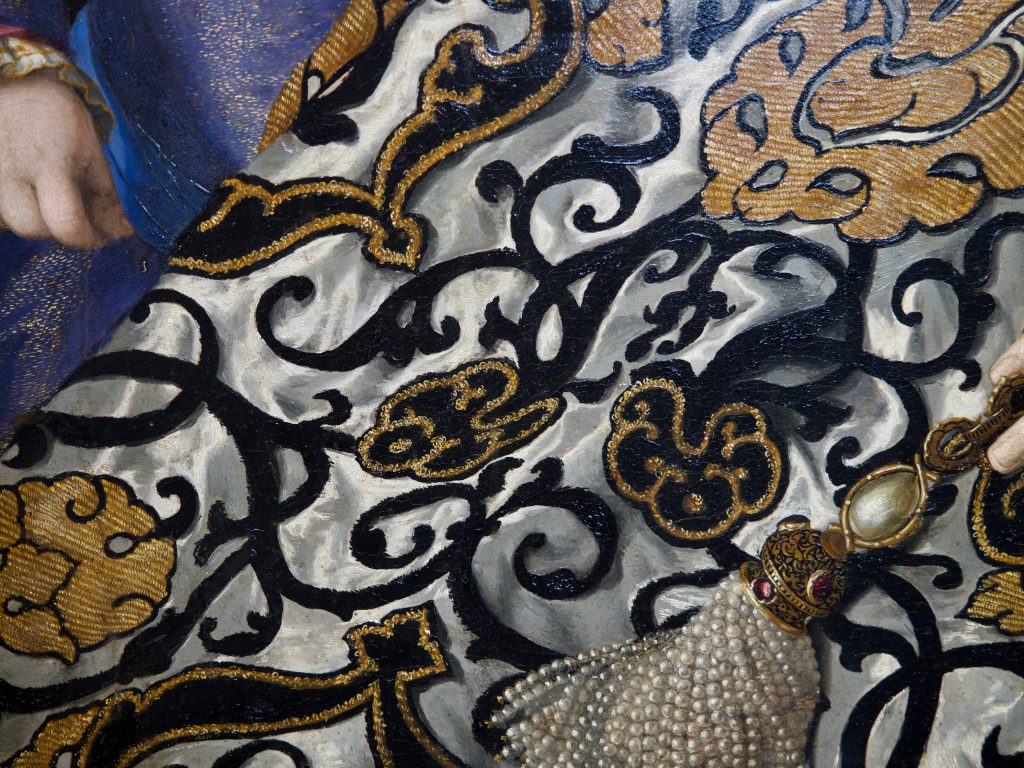
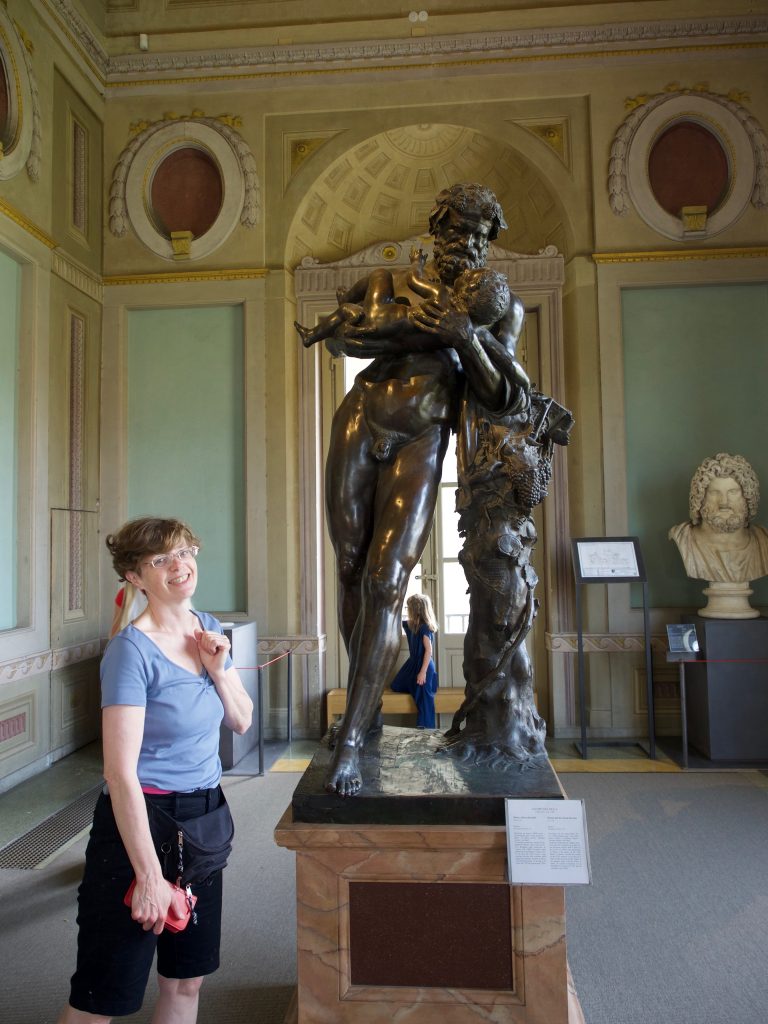
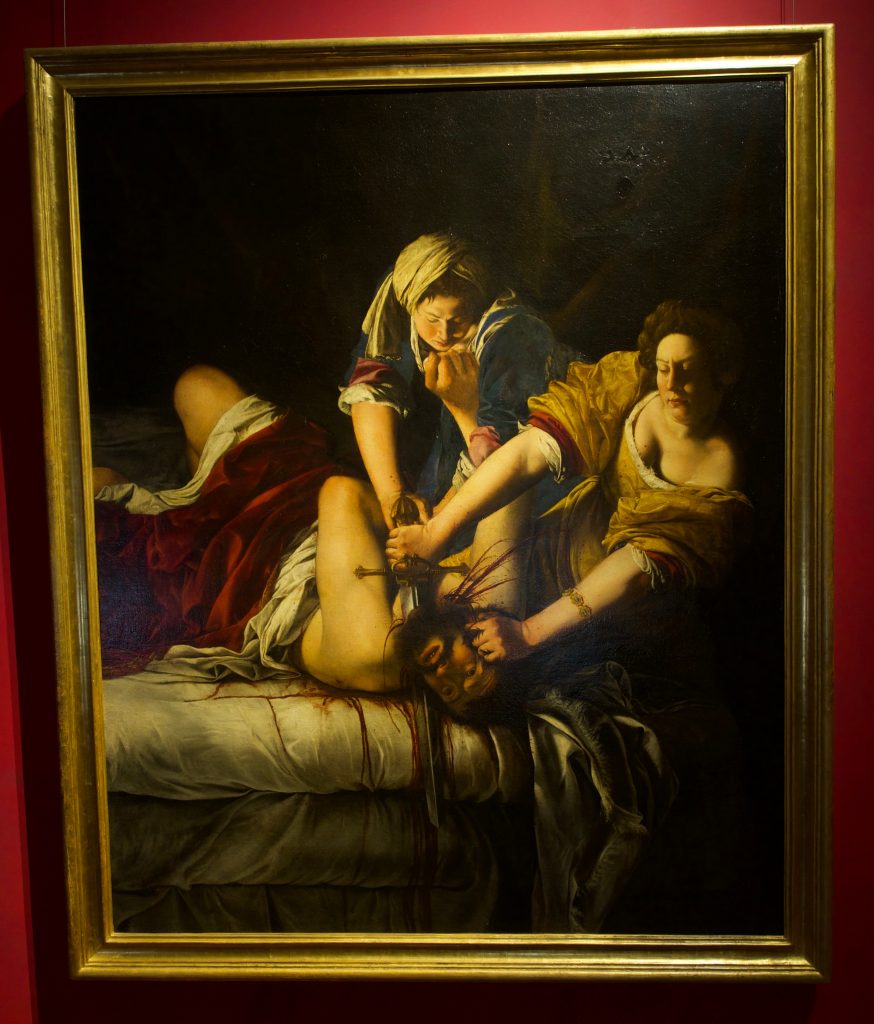
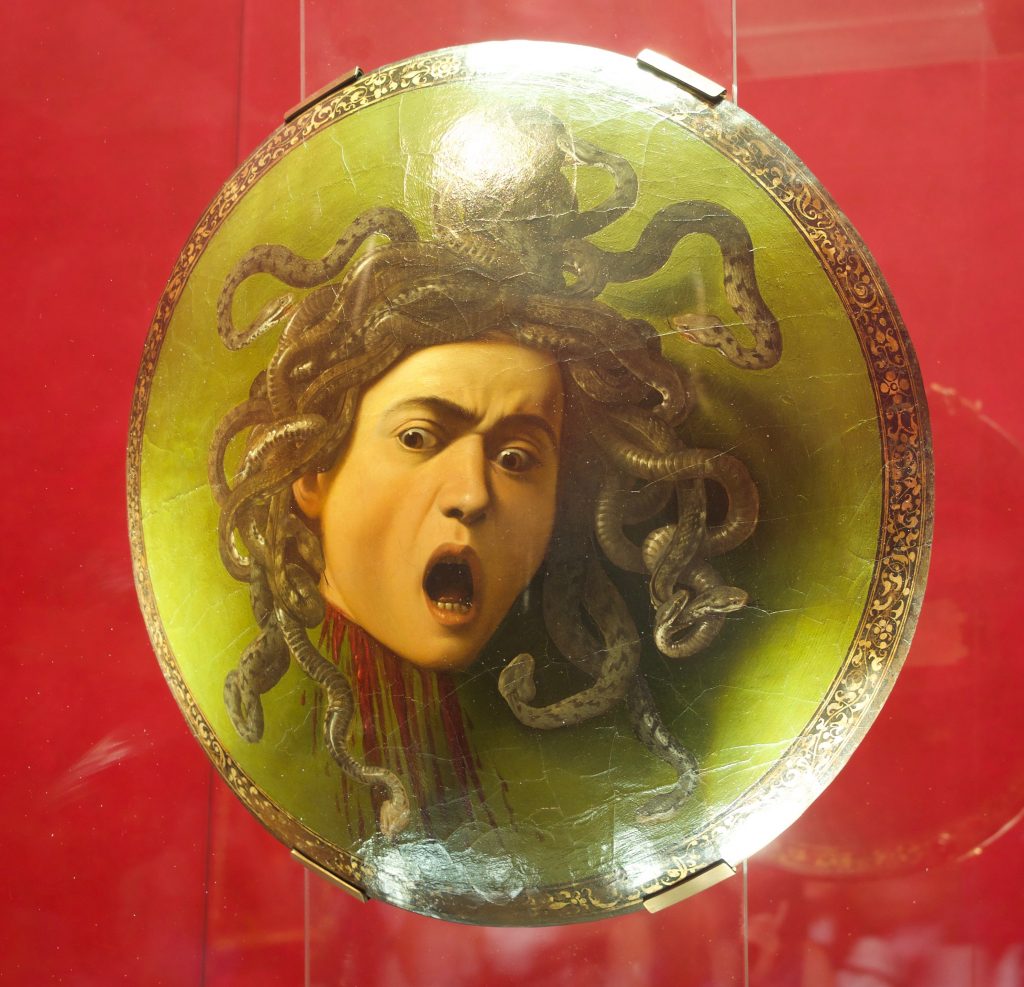
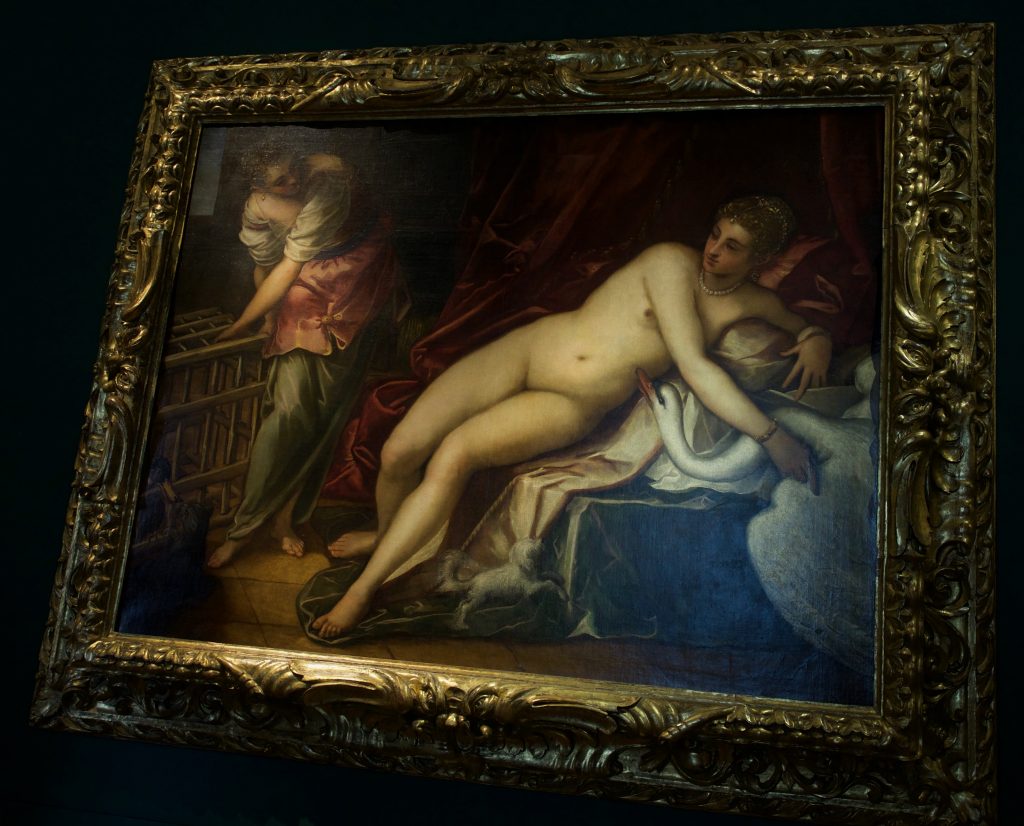
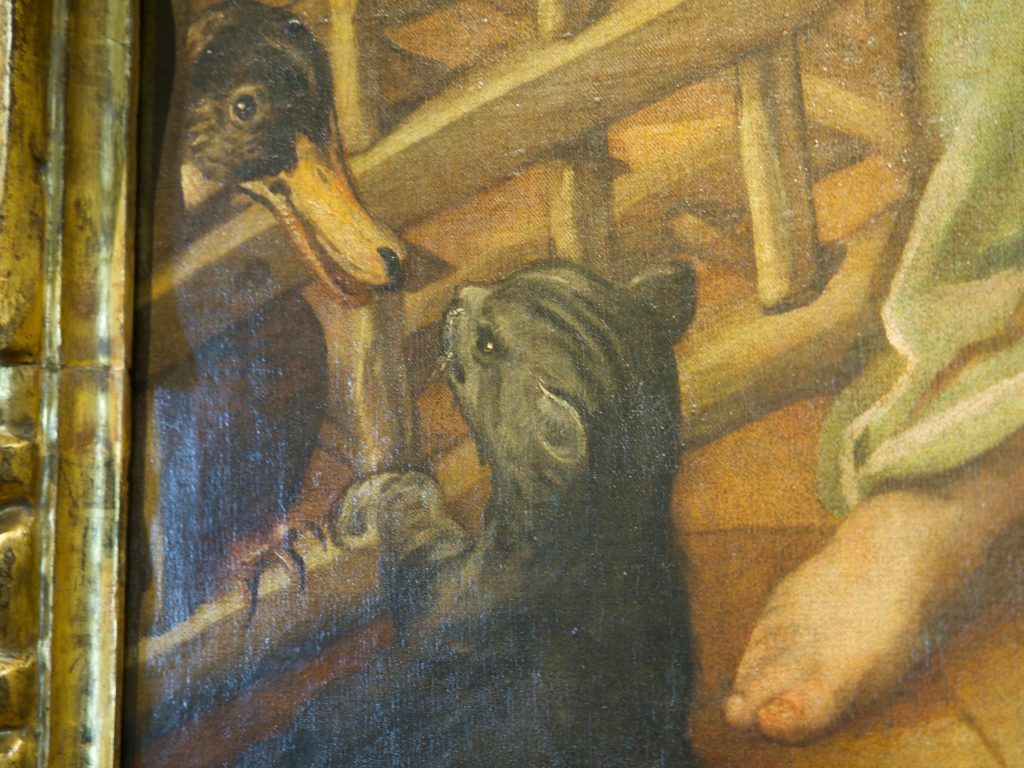
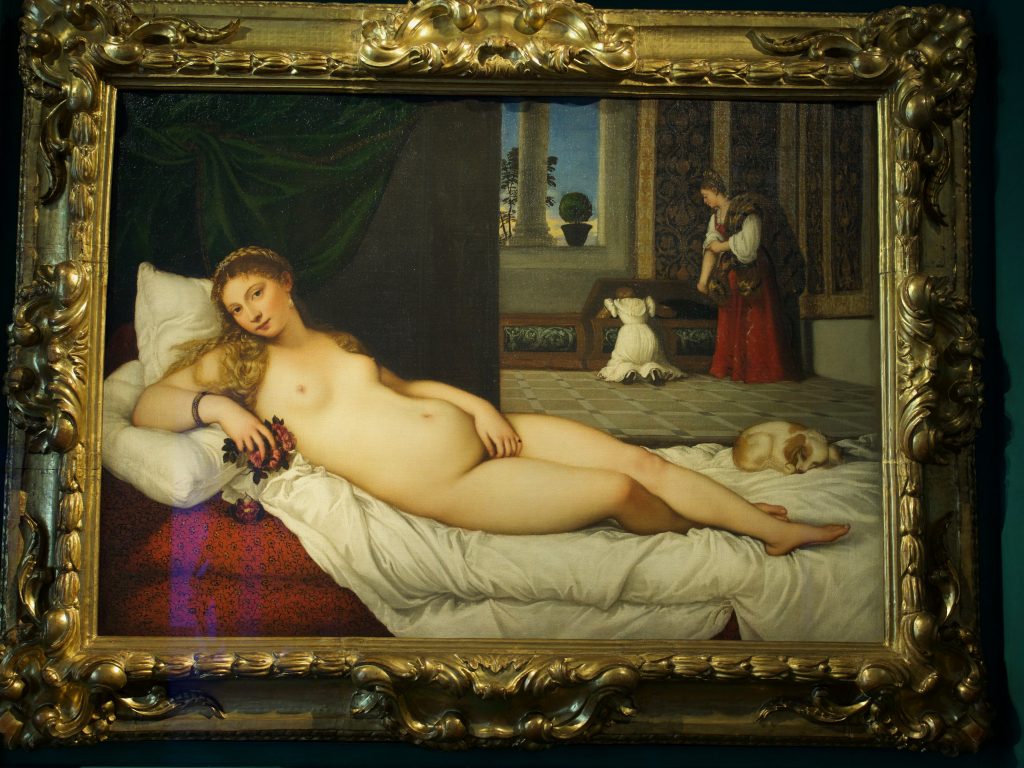
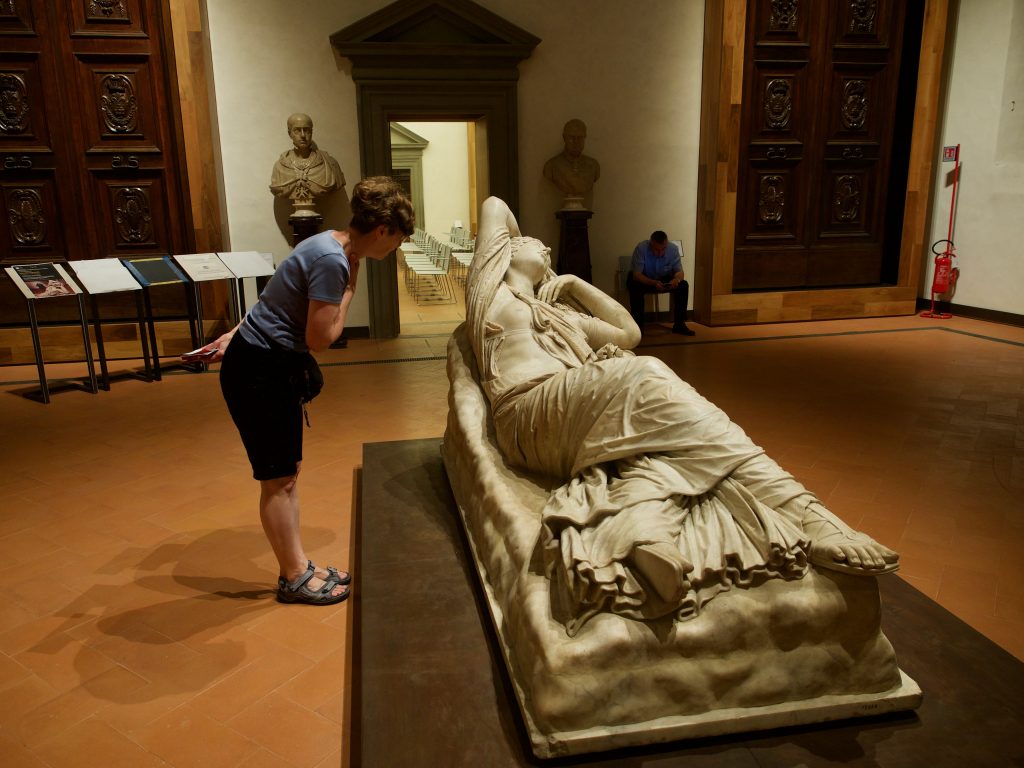
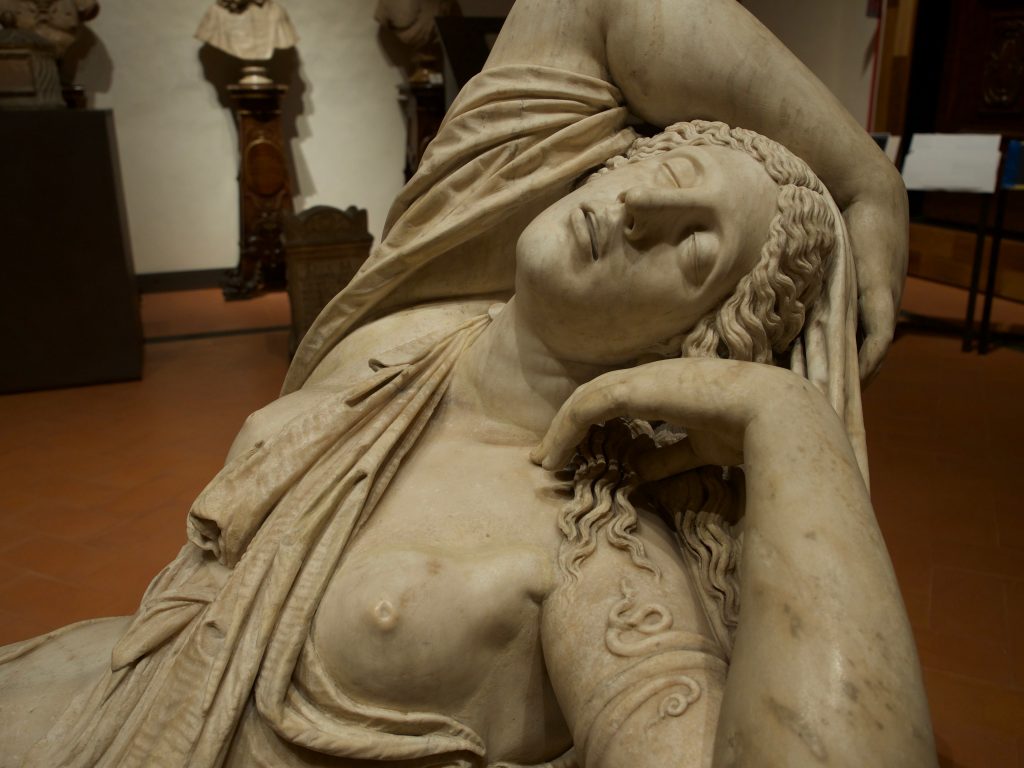
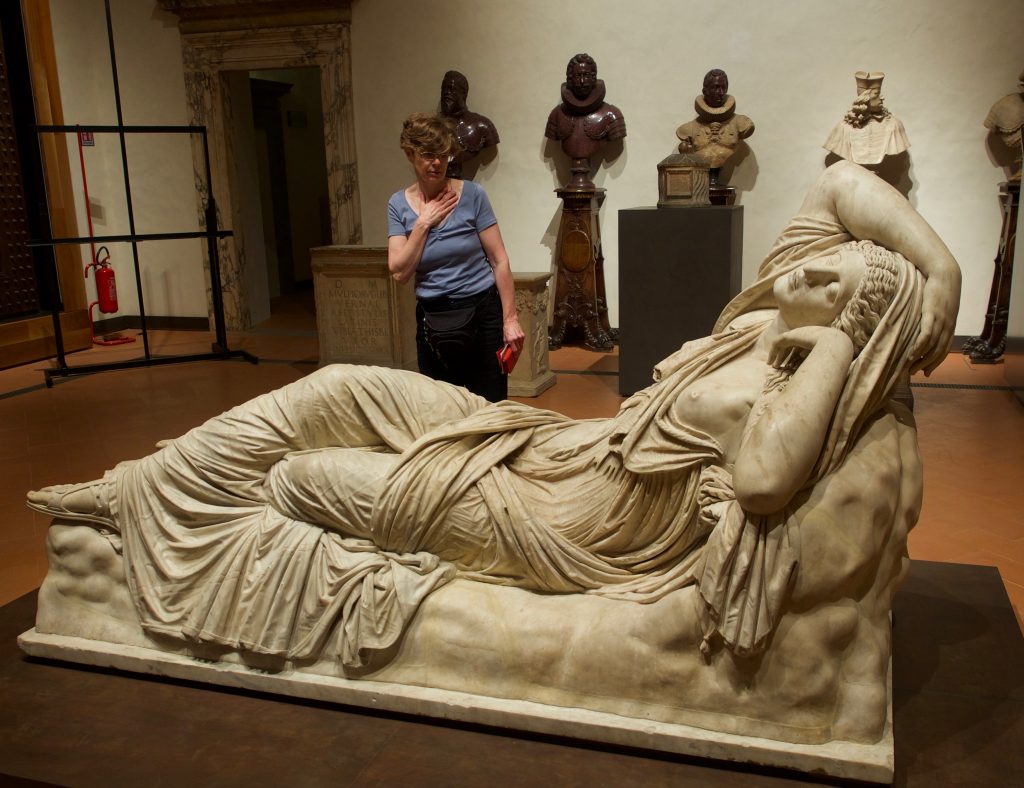
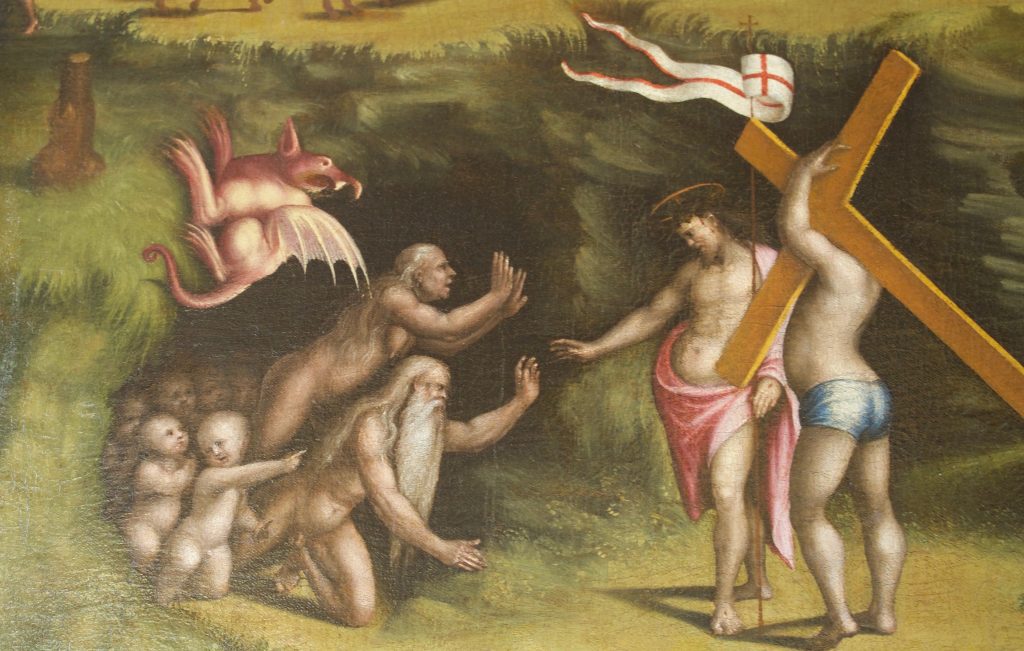
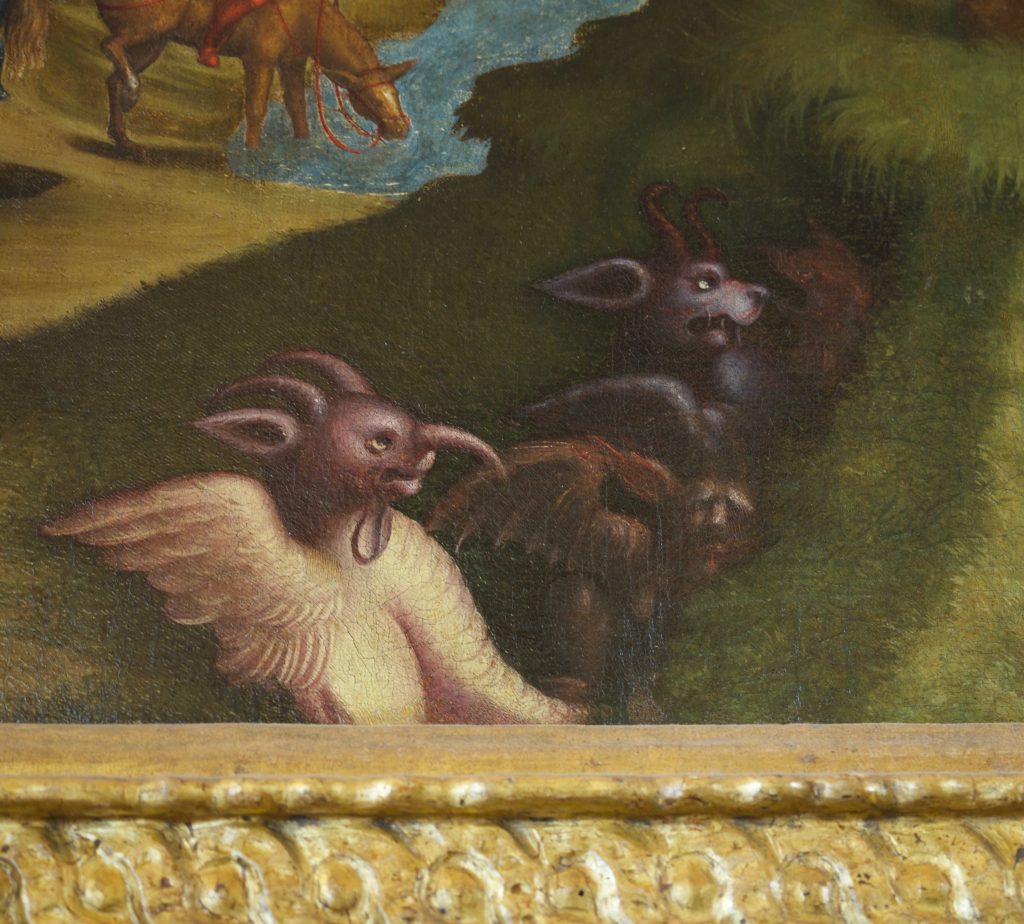
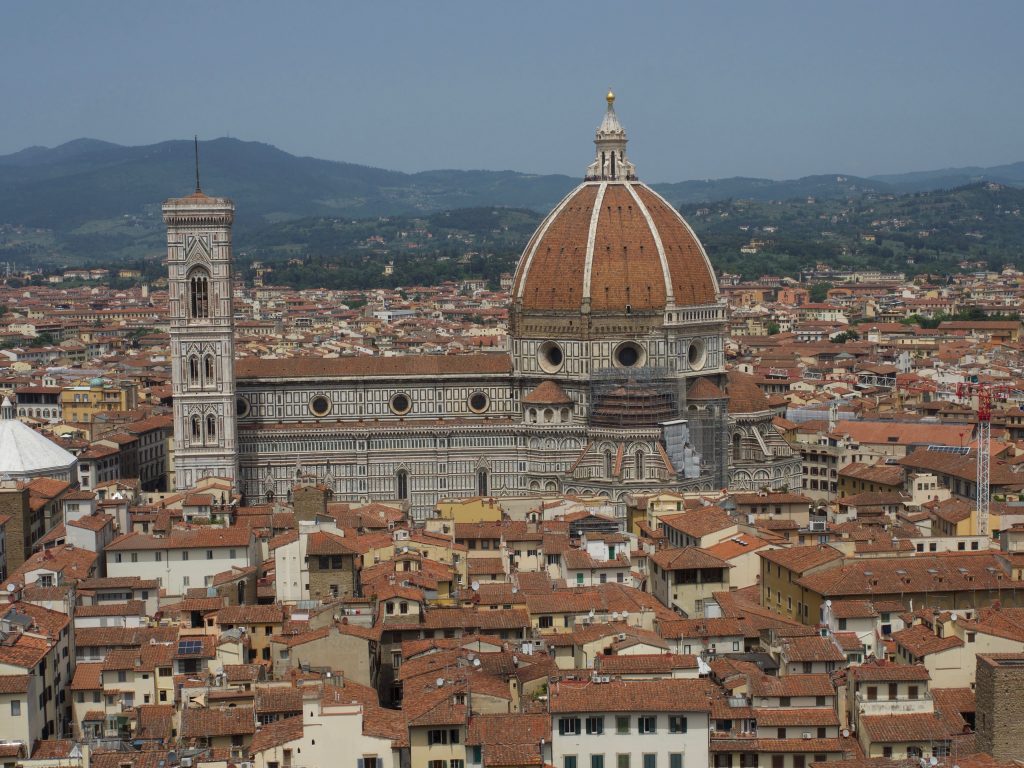
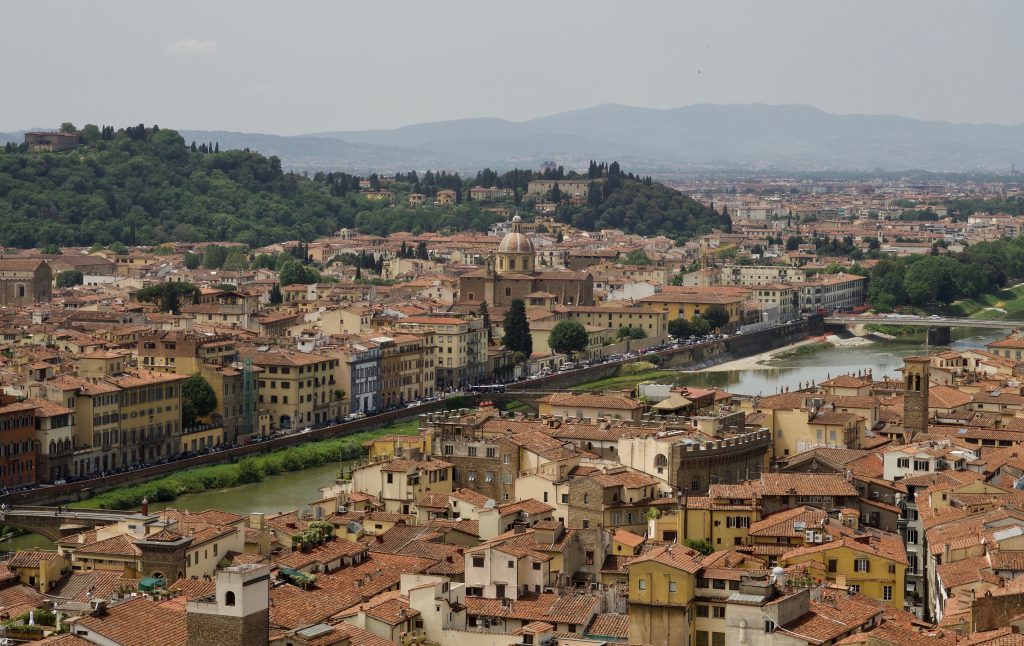
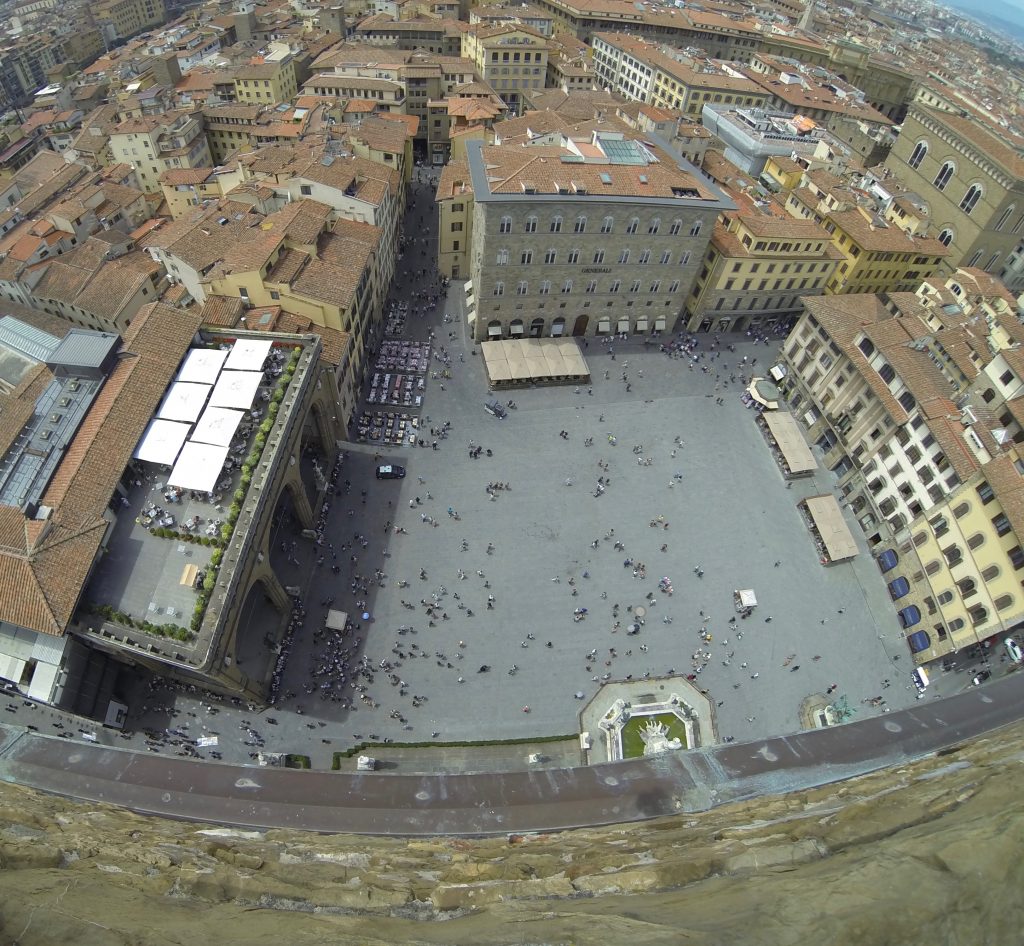
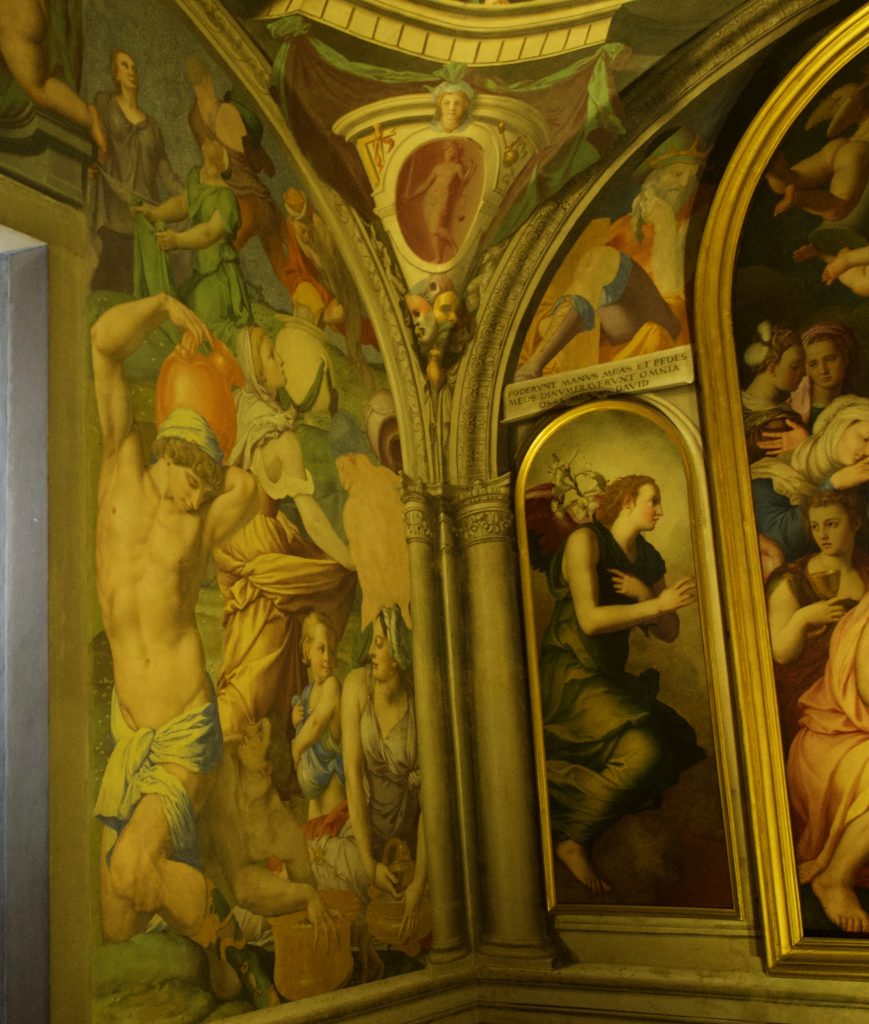
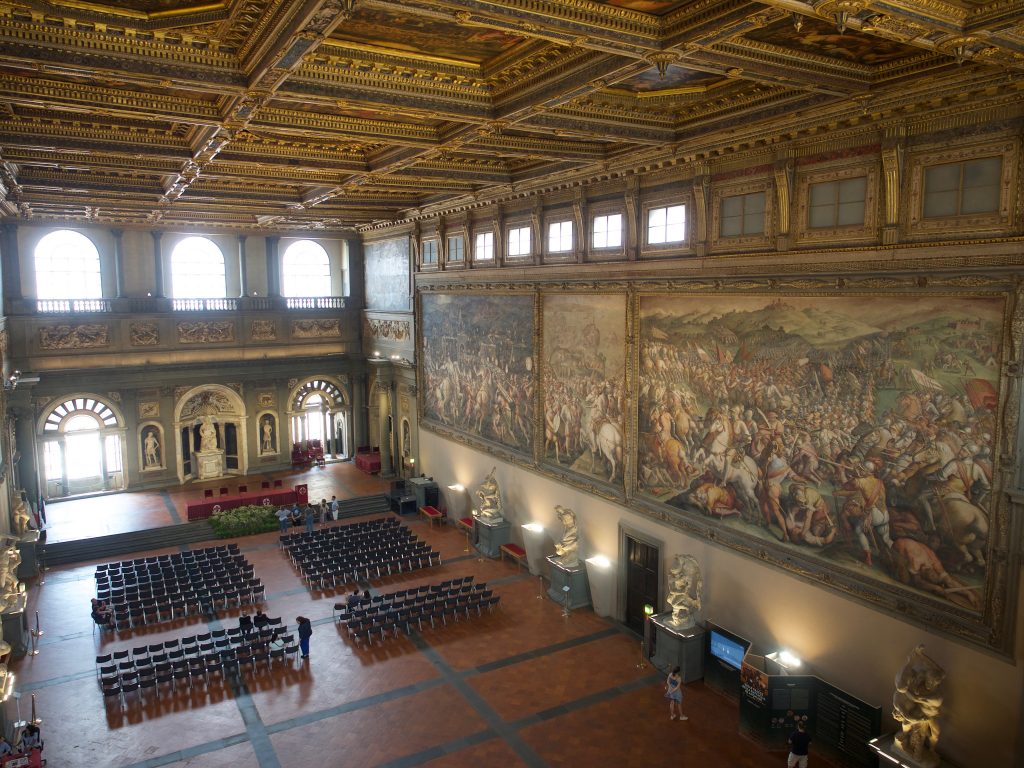
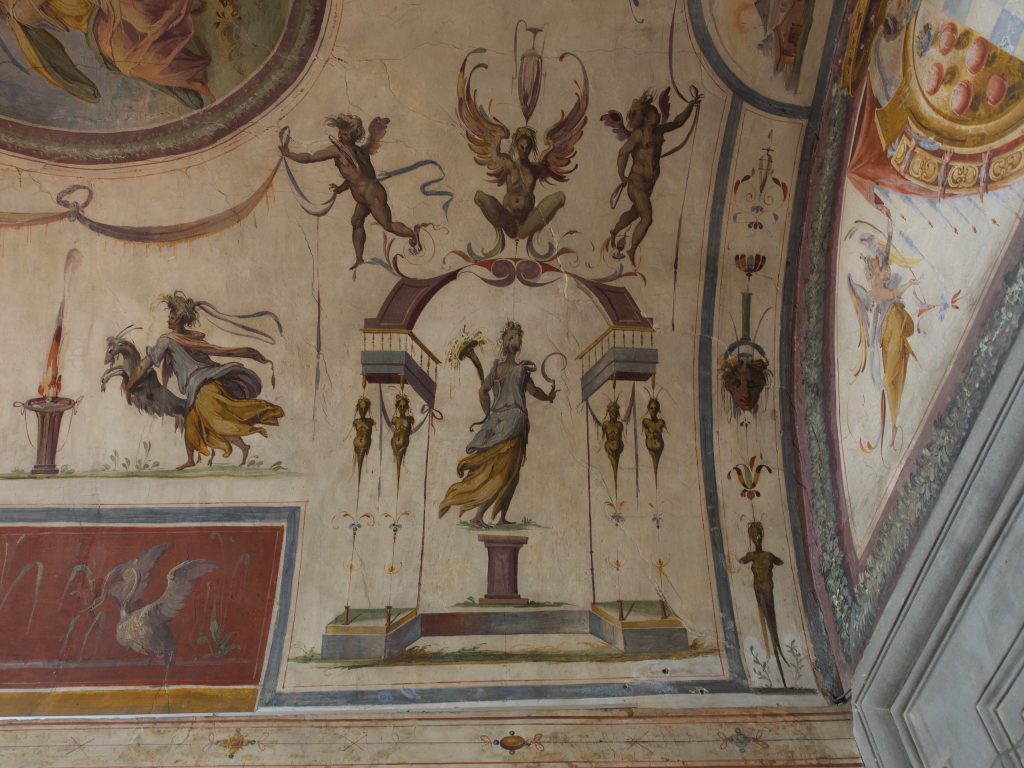
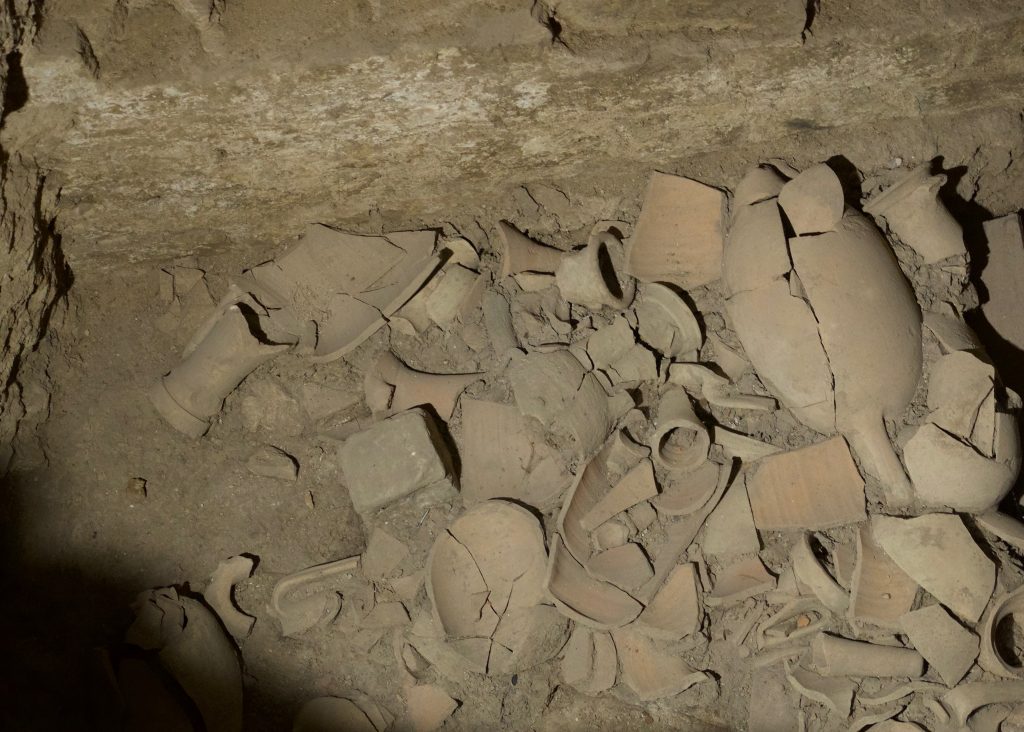
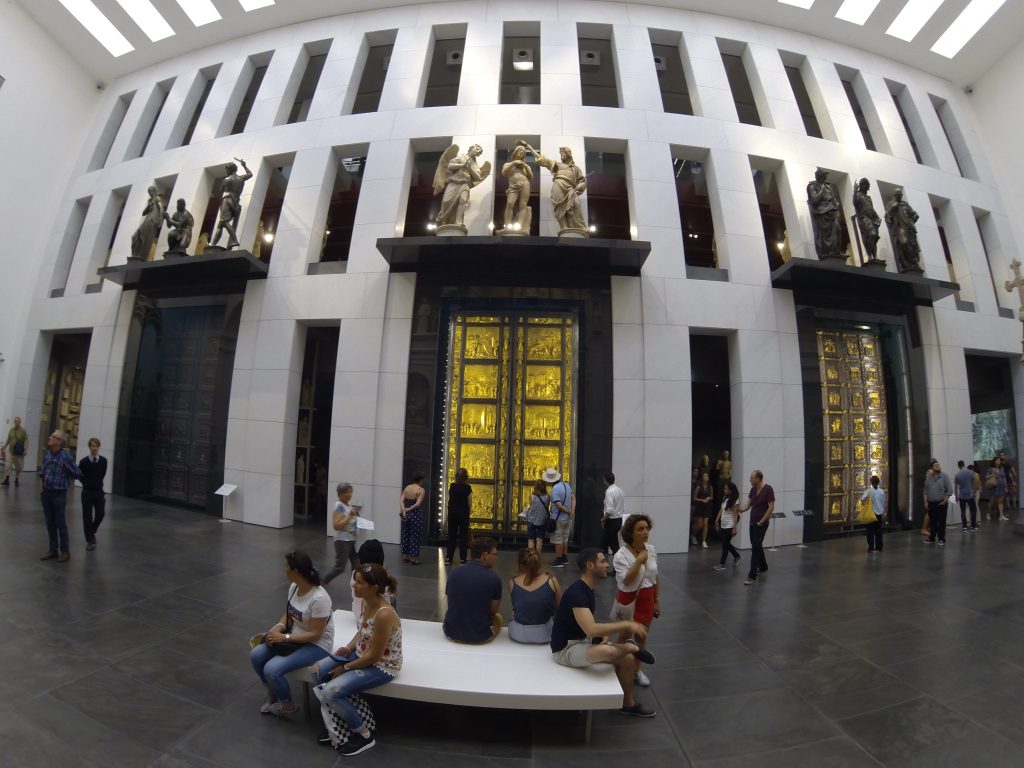
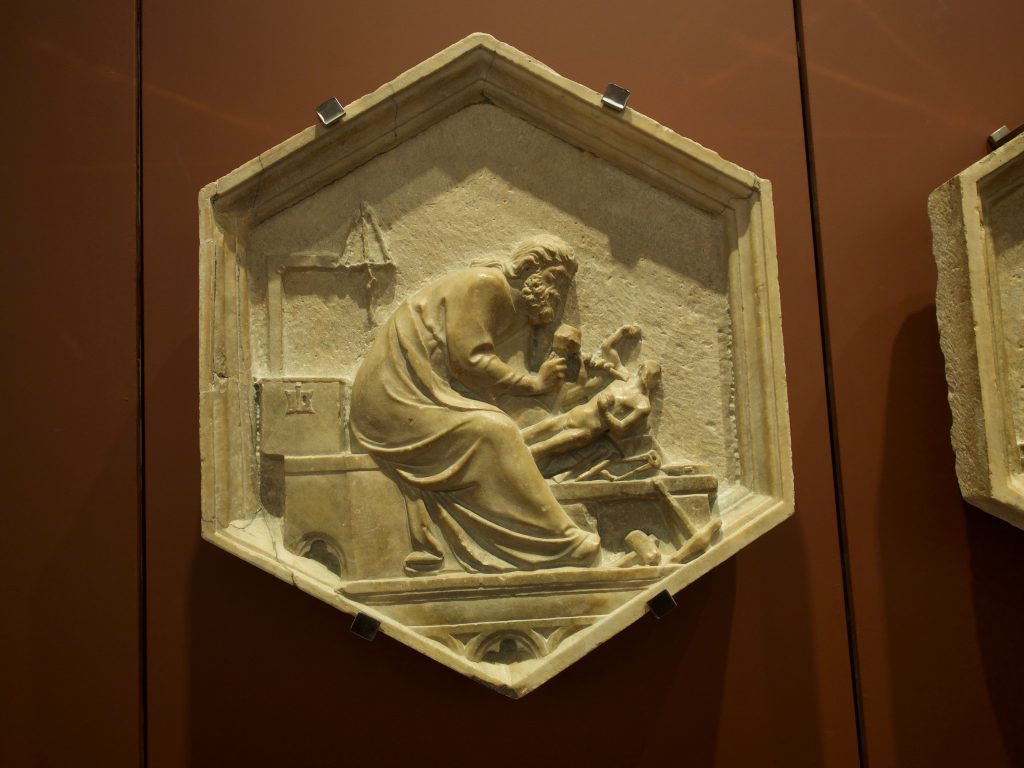
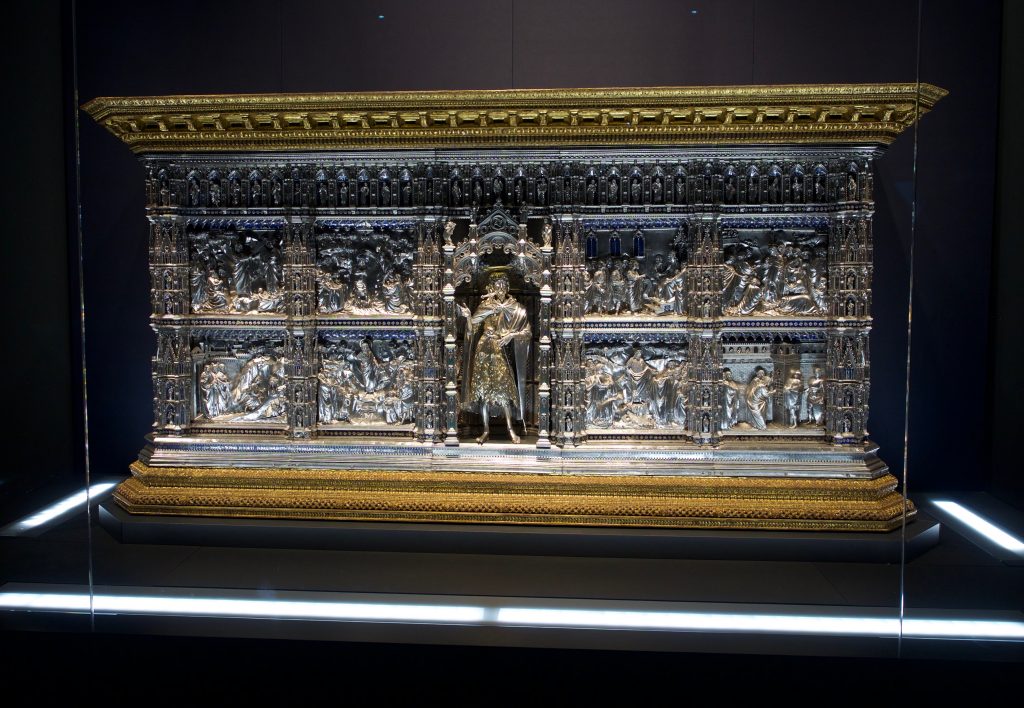
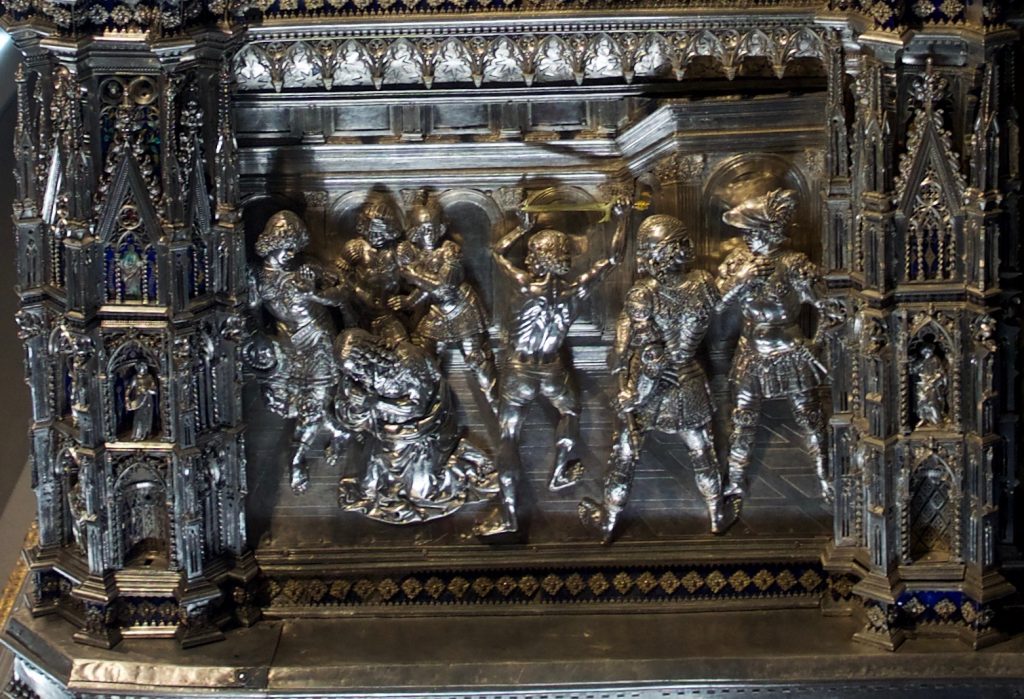
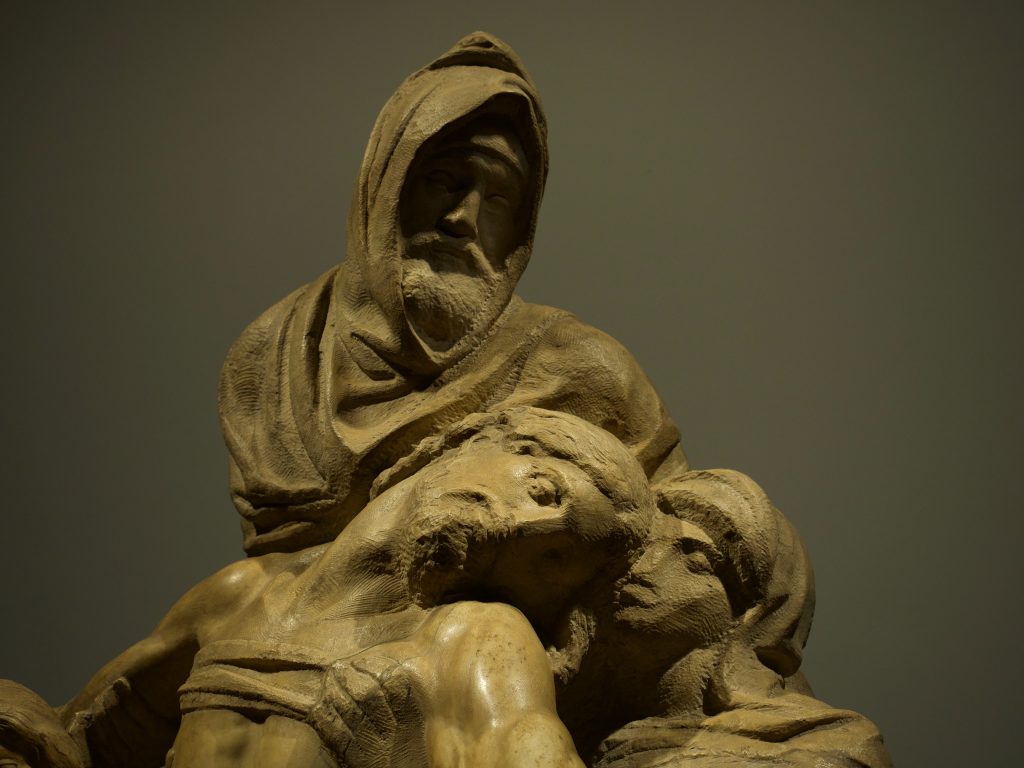
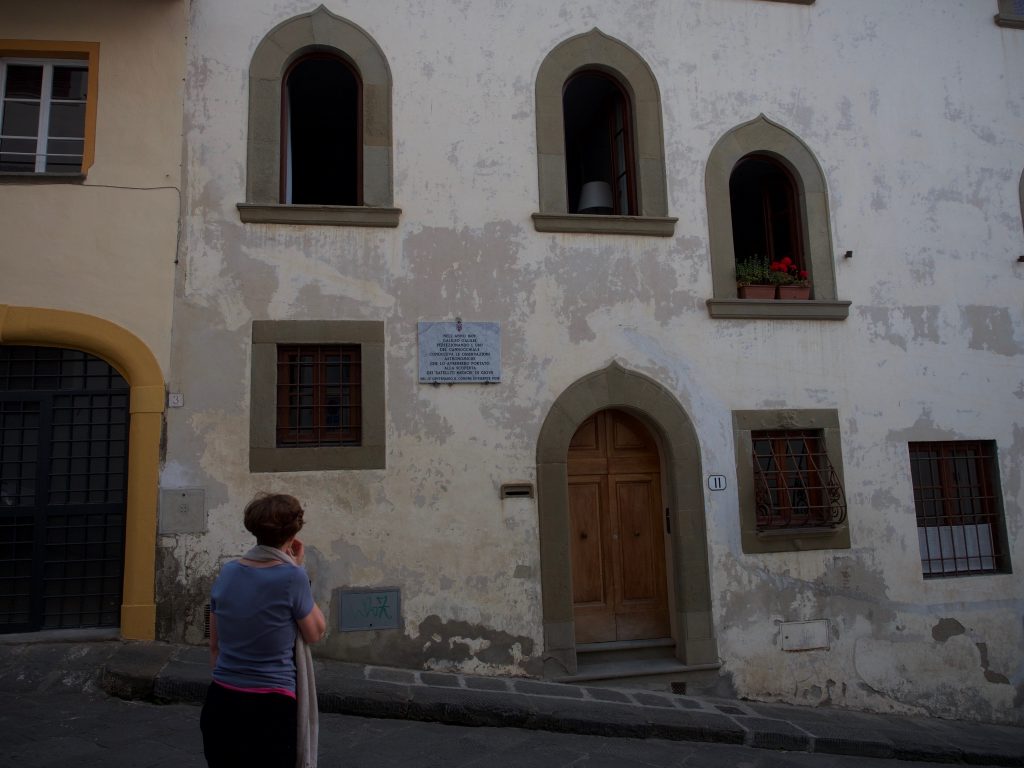
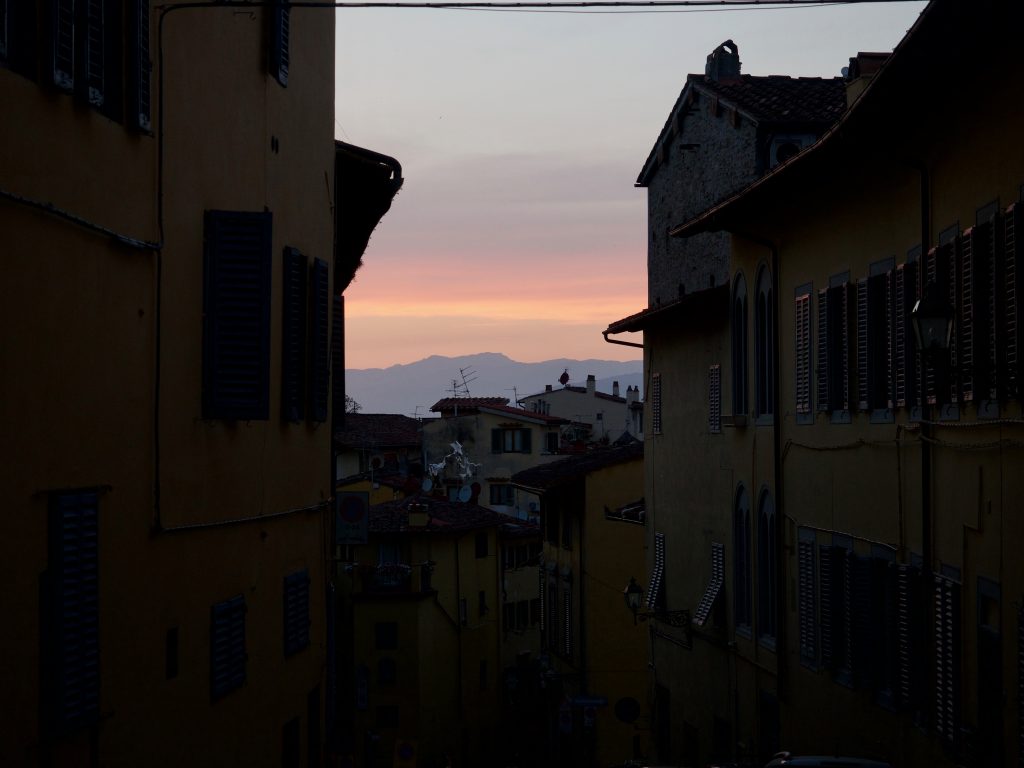
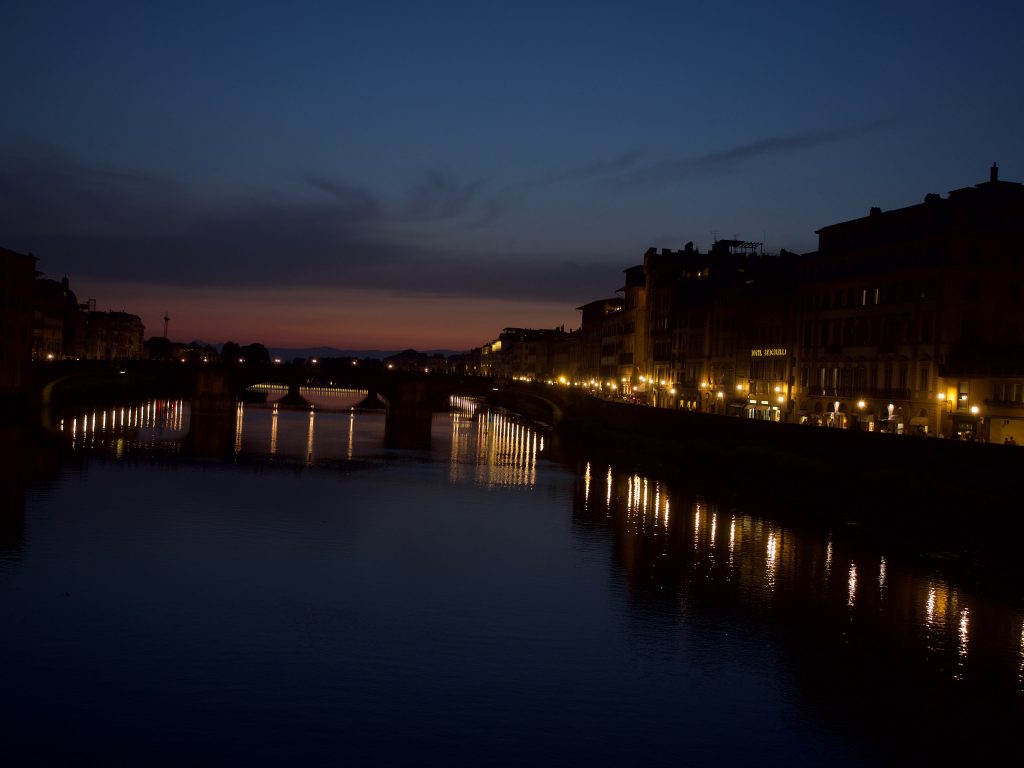
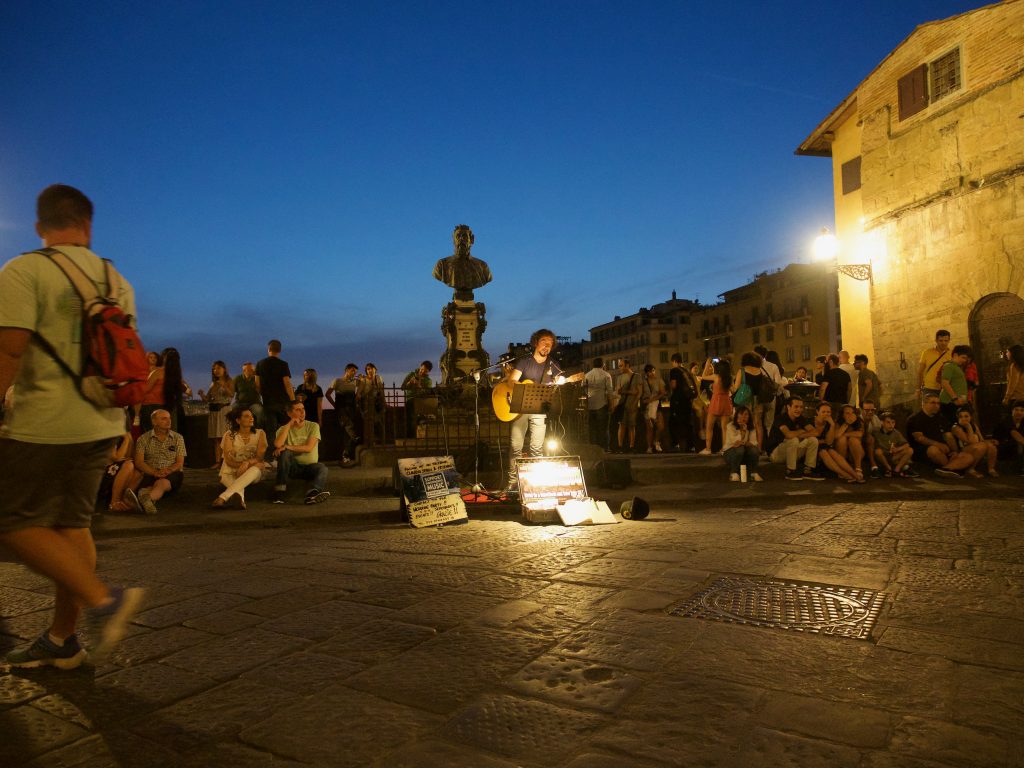
Today was split into two halves: The Uffizi museum in the morning and the Palazzo Vecchio with a few add-ons in the afternoon.
We got up bright and early to get to the Uffizi by our reserved time, 8:30 am. Since it only opens at 8:15, we had a few quiet moments in some of the rooms, but otherwise, it was obviously quite busy and packed (hence the skip-the-line reservations with the FirenzeCard). While it’s not as vast as the multiple Vatican Museums, it is of course the next-largest thing, certainly from Roman times to the late Renaissance and a little bit into the Baroque, and has issued its own list of top 100 works, like the Vatican—a rivalry that has been going on for a long time. The Medici were of course not only huge patrons and commissioners of art work, but also fanatic and all-encompassing collectors, and so this is a totally overwhelming collection (plus, one of many). And like the Vatican museums, the modern Uffizi today is a mix of displays that were always there and always displayed in a certain way, and others that are very modern in terms of curation and presentation.
First off, there are “Roman statues” by the mile in the main U-shaped second floor. These tend to have many, many Renaissance and baroque fixes, and often no good documentation to tell the non-expert what was really Roman, which is the problem with the pieces found in the Renaissance. The most famous of these are an all-star list, though: The Niobids, an entire statue group found in Rome, in their own crazy overdecorated “Niobe room” (I would really like to know how much of them is „real“); a Sleeping Hermaphrodite (which can only be seen from the front, a ridiculous decision because the whole point of this sculpture is that you see it from the back and think it is a female, and then get a surprise as you walk to the front and see both breasts and a penis); the Venus di Medici, which is in another crazy overdone round room done up in red velvet, looking askance at the crouching Knife-Sharpener while some other Roman dudes wrestle on the other side of her. There was also another copy of the Silenus with baby Dionysus that looks SO much like my dad and always makes me happy!
There is also one sculpture fragment actually believed to be a Greek original from 2nd C BCE—the head of the Dying Alexander—a real rarity here and of course anywhere when it comes to Hellenistic sculptures.
As far as the high Renaissance goes, the biggest hits were displayed in special rooms off to the side. The Leonardo da Vinci room was pretty amazing—there are so few completed paintings by him, but the Uffizi has the Annunciation, which is so different from Fra Angelico’s, as well as two other paintings, one completed only partly Leonardo’s, and the other the incomplete Adoration of the Magi. Michelangelo’s Doni Tondo is the prize piece in the Raphael/Michelangelo room—always fascinating to me that 19th c. Comments tend to be negative because the Virgin Mary is so masculine and the phalanx of naked guys in the background seems completely out of context. Still, I really like parts of that composition, and the crazy frame with the heads sticking out.
Raphael is represented—what I remember is the Madonna of the Goldfinch (Eliot, huge Raphael fan that she was, mentions seeing it in the Uffizi), as well as his beautiful portraits of Agnolo Doni and Maddalena Strozzi, which we could also see from the back (where they have random mythological paintings by an unknown artist). It was nice to see these in a couple of very nicely lit, newly done rooms off to the side, rather than in the massively decorated Medicean settings of the original Uffizi decor. It helped that we had beat the crowd to those rooms and had it relatively quiet there.
Beyond these gold-star pieces, some of my favorite discoveries / re-discoveries were: Piero di Cosimo‘s Liberation of Andromeda with its absolutely adorable monster is here (Reminder for Clash of the Titan fans: IT WAS NEVER A KRAKEN!). I also found another great monster (a dog?) in the Hugo Van der Goes altarpiece that ended up in Florence in 1483 and radically changed the way the Florentines painted once they studied the oil-painting technique he and the other Northern painters were using.
Mark was excited to see the original „Venus on the Half-Shell“ by Botticelli, because that is of course a painting that shows up everywhere all the time, but I was glad to also see an Annunciation by him close up, just because it is so different from the one by Fra Angelico a generation earlier. There were of course also a handful of other Fra Angelicos, and also the famous Cimabue and Giotto altarpieces of the Madonna and child that I kept getting confused when I studied for my Renaissance exam—so similar to the untrained eye! These used to be at the Accademia dell’Arte in the 19th century, which is where George Eliot saw them. Now at the Uffizi, they are across from each other in a room to themselves, while the countless other altarpieces that look basically the same with the gold, the un-babyish baby, and the virgin with her tilted head continue for many rooms. It was just a best-hits of super-early Renaissance goldleaf and intense angry stares, but these really don’t get me excited.
At the other end of the Renaissance (so about 1550-1600), the Mannerists are also well-represented, including a beautiful Bronzino portrait of Eleonora of Toledo (the wife of Duke Cosimo di Medici) that my friend Ashley presented on last semester, teaching me about the amazing fabric of her dress and where it came from. The dress is painted with so much loving attention to the detail of the fabric that it becomes more important than the faces of Eleonora and the child who is represented with her. And there was Artemisia Gentileschi’s amazing and violent Judith Beheading Holofernes, about which another tourist, a girl in her early 20s, gave an impromptu lecture for her friends before we geeked out about it together for a little. There was also another painting by her, a St. Catherine thought to be a self-portrait, that I didn’t know about before. Among the Caravaggios, the weird shield-shape head of the Medusa was definitely my favorite. The Venus of Urbino by Titian is here, along with a bunch of other Venuses that are not nearly as interesting, although one turns out to have a hidden cat, so that was fun to see. Speaking of hidden cats, we came across a Leda with the Swan by Tintoretto that turned out to have a secret cat in it, conversing with a duck, and Mark took a great photo of that. Otherwise, he collected a few more Annunciations for me from all across the Renaissance. I am just trying to see how different they are from each other sometimes!
The museum tour ends with a teeny collection of Rembrandts and other Dutch artists, but by that time, I was getting a bit tired AND I was also a bit confused. Again, I was looking for an Ariadne that wasn’t in evidence. So here is the Ongoing Crazy Story of the Search for the Sleeping Ariadne, in this case, the Medici Ariadne/Cleopatra (a “lesser Ariadne” by far, for many reasons, mostly because only a very small part of her is actually Roman, and who has been wandering around various collection). Eliot didn’t ever see her, but I had done research on her and still needed the comparison. I was SURE I knew where she was, based on Uffizi website information. But she was actually moved in January 2018 from her prime-time spot to make room for the Leonardo da Vinci display. So once I found the right guard who could actually tell me this, I thought there was nothing to be done. But the guard sent me on a trail that led me to the office of the Uffizi (a tautology if there ever was one) in a side street, which was, unbelievably, open on a Saturday. I explained to the friendly employee on duty that I was doing research on the Medici Ariadne and did not realize she was not on display. He made a 10-second phone call, and then he walked us across the street back into the first floor of the Uffizi building to an employee-only section and let me into a huge display room, and there she was, right in the center, waiting for the next time they pull her out of storage to display her! The guard sat down and waited, playing on his I-phone until we had seen and photographed her from all angles. I got to go really close up to see the workings of the marble (I could not see the seams between new and old!), and Mark did a beautiful job walking all around her with his camera. We walked out of the Uffizi just STUNNED. I cannot believe my luck.
Once I had gotten over my encounter with the sublime, it was almost 12 noon, and we were both tired and hungry, and basically went to the nearest restaurant even though we were right by the Palazzo Vecchio and everything was tourist traps. But our pizza & salad were good and not crazy-expensive, either, and the restaurant had both shade and misting, which was already badly needed by this time.
After lunch, we tackled the Palazzo Vecchio, which was really overload of what I think of ugly Vasari overkill, but there were also some interesting surprises. The highlight was clearly climbing the tower and looking at the city from above yet again—great views, and also a secret shot with the go-pro straight down unto the plaza. There was a surprise Piero di Cosimo in the museum portion —a Passion of Christ with little monster-demons at the entrance of hell in a scene that I assume is supposed to occur right after the Harrowing of Hell. Otherwise, the museum basically covered the public and sort-of-private Medici rooms and former senators’ rooms before the Medici moved to the Pitti Palace. ]
The rooms in the former halls of the priors were ridiculously overdone by Vasari and his artists and artisans, but I was amazed to discover the chapel of Eleonora of Toledo done by Bronzino, especially a scene of manna raining from heaven where I swear I could see a woman with a sideways glance, checking out the very nice shape of a man in a loincloth with a water jug. In a chapel? Eleonora, really. Many of the other rooms, designed by Vasari, had this weird and intriguing „wallpaper“ decoration in many of the rooms between larger frescoes, which I assume was partially inspired by Fourth-Style Roman wall painting, but I had never seen anything like it and am a bit curious about the style and the artist who did this.
There was also a spot from which we looked directly down into the Hall of the Five Hundred, with its enormous Vasaris, and there was actually a lot of documentation all over the museum about the various traces of the Battle of Anghiari by Leonardo that is supposed to be below it still.
The last part we visited was “the underneath” excavation exhibit with the remnants of the Roman theater that was underneath part of the palazzo, with brick arches and broken amphora that have been excavated since the late 19th century. Just fascinating.
We have still not made it to the Cathedral itself, because the lines are always super long and we were too late in the day to still make it, but after a gelato break we did go to the Duomo museum, not expecting to see as much as we did there. Here, there are the REAL Gates of Paradise (we’d seen the copy cast on the doors of the baptistery and also the one at the Nelson-Atkins museum in Kansas!), as well as the original sculptures from the outside of the cathedral in the context of a reconstruction of the half-done Cathedral facade that went away in the 1550s (I think). Likewise, there are the originals of Andrea Pisano‘s hexagonal reliefs for the Campanile, with the famous „studio of the sculptor“ representation. There was also lots of gold and silver, including the CRAZY silver altar (the „glitter bomb,“ as we immediately called it) with the beheading of St. John the Baptist in whose creation Leonardo presumably had a hand, when he was Verrocchio‘s student. I didn‘t realize that there was a Michelangelo Pieta at this Museum—it is the late, unfinished one with Joseph of Arimithea that George Eliot talks about. The unfinished parts are both haunting and really beautiful—reminded me of Ernst Barlach, and make you realize what it takes to get from blocks of marble to the incredible detail of the musculature that Michelangelo always brought out so well.
When we were done with the Duomo museum, we were definitely done with museums for the day. We did some shopping on the way home, and I made us salad for dinner. The bread we bought was a disappointment (too hard and not salty enough—just not good bread for our taste), but everything else was good. Plus, we compensated by having another round of gelato when we went for an evening walk (we’ve had small gelato portions twice a day since we got here, and keep justifying it because we are getting about 10 miles of walking a day in). Our evening walk led us up the hill from the Ponte Vecchio toward Fort Belvedere through windy and sometimes steep streets; again, every square inch seems to turn out to be important history AND picturesque (like the random house we walked by that had to do with Galilei discovering the moons of Jupiter in 1609). As the night fell, we walked back through another city gate and down to the river and onto the Ponte Vecchio to people-watch, listening to a busker sing in Italian to his guitar, with everyone just hanging out with their selfie sticks. We walked home about 10, and were in bed about 11:30 after much-needed showers.